As a Londoner born and bred, my hometown’s iconic sights always set my heart aflutter. Whether you are a local or a first-time visitor, there are famous London landmarks that you simply have to see.
Some of these are iconic places in London; others are less well-known tourist attractions (and one is downright quirky). Some have been around for centuries; others are new additions to London’s cityscape.
But they have one thing in common. Collectively, they have helped to shape the landscape and the narrative of the great city that London is today.

Some articles on this website contain affiliate links. This means that I may earn a small commission if you make a purchase through these links. As an Amazon Associate, I earn from qualifying purchases. Read the full disclosure here.
Famous Landmarks of London at a Glance
There is no shortage of landmarks in London. The challenge is whittling them down to a manageable bucket list.
I have created five main categories (+ an odds-and-sods one) to group them. But if you prefer to organise your sightseeing by geographical area, there’s a map at the end of this article that brings together these fabulous London attractions by area.
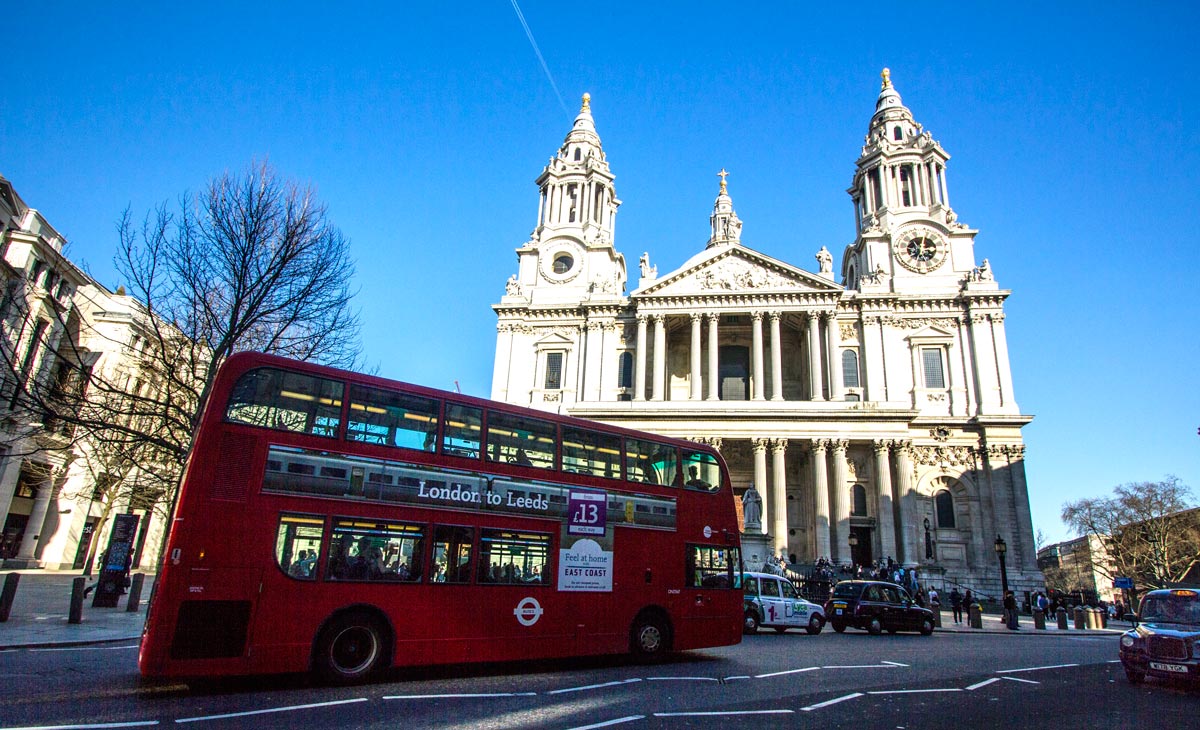
Top 10 iconic London landmarks
- Tower Bridge
- Tower of London
- St. Paul’s Cathedral
- The Shard
- London Eye
- Houses of Parliament & Big Ben
- London Tube Stations
- The River Thames
- Trafalgar Square
- Battersea Power Station
Famous buildings in London
- City Hall
- The Gherkin
- The Walkie-Talkie building (+ Sky Garden)
- Canary Wharf
- Alexandra Palace
- Smithfield Market
- Shakespeare’s Globe
- Borough Market
- Covent Garden Market
- St. Pancras Station
- Royal Albert Hall
Historical London landmarks
- Maritime Greenwich
- Westminster Abbey
- Buckingham Palace
- Kensington Palace
- Hampton Court Palace
- Monument to the Great Fire of London
Famous museums & galleries
- British Museum
- Tate Modern
- Natural History Museum
Best squares & parks in London
- Hyde Park
- Kew Gardens
- Dinosaurs at Crystal Palace Park
Other famous London landmarks
- HMS Belfast
- Millennium Bridge
- The Thames Barrier
- South Bank Book Market
- Portobello Road
- Piccadilly Circus
- Street Art in London’s East End
My Top 10 Iconic London Landmarks
1. Tower Bridge
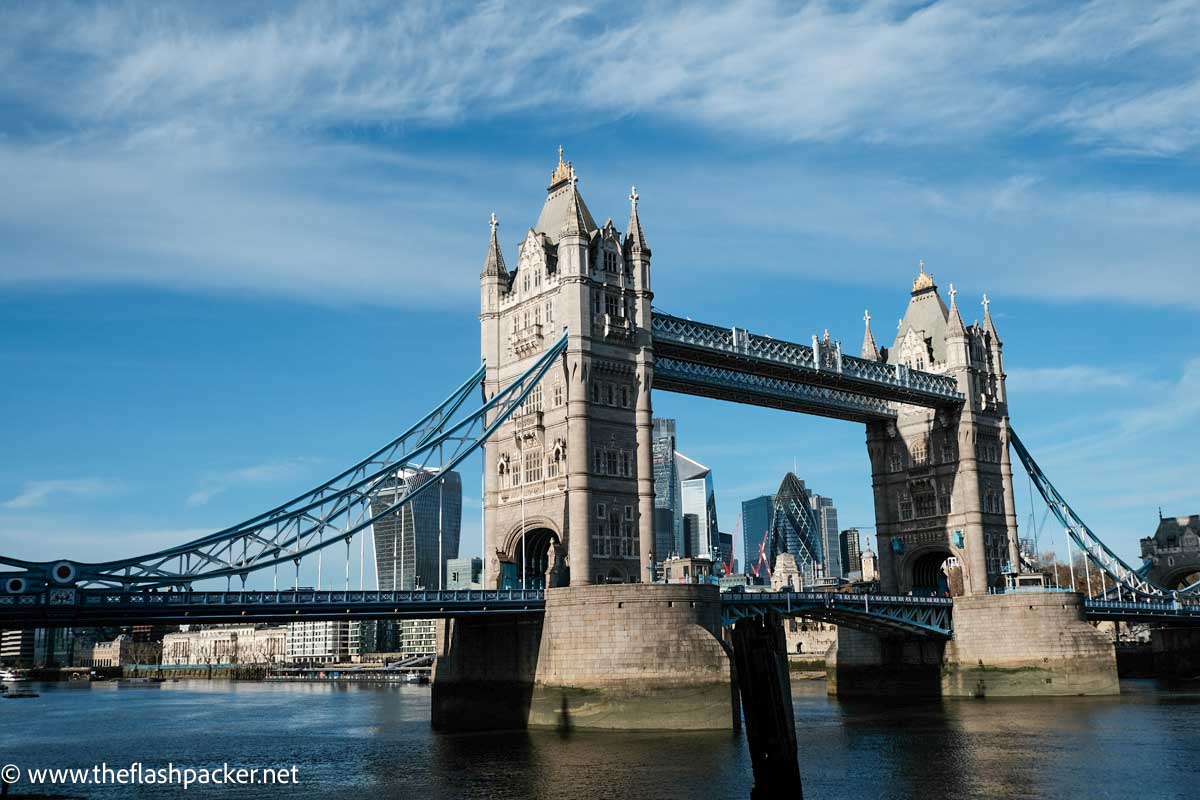
Straddling the River Thames near the Tower of London, this Victorian bridge, hewn from Cornish granite and Portland stone, was built to ease road traffic congestion whilst retaining access to this important stretch of the river. However, unlike the other bridges on the Thames, this is not a traditional fixed bridge at street level.
To allow access to the many cargo ships of the day, Tower Bridge was designed as a drawbridge and suspension bridge. This means that the middle section of the bridge can be raised to allow river traffic to pass through.
The central drawbridge is raised approximately twice a day approximately 1,000 times a year. Check here to see when the next bridge lift will be.
For a fun and educational visit, buy a ticket for the Tower Bridge Experience. A lift whisks you up to the walkways, 30 meters above the street level, from where you can look down through the glass floor at the bridge below and learn about the construction of the bridge.
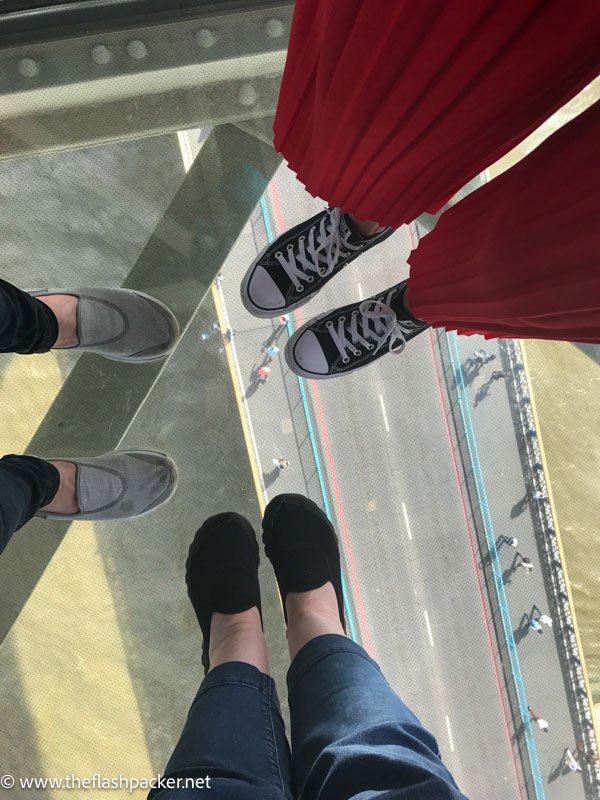
Closest Tube station to Tower Bridge: Tower Hill
2. Tower of London
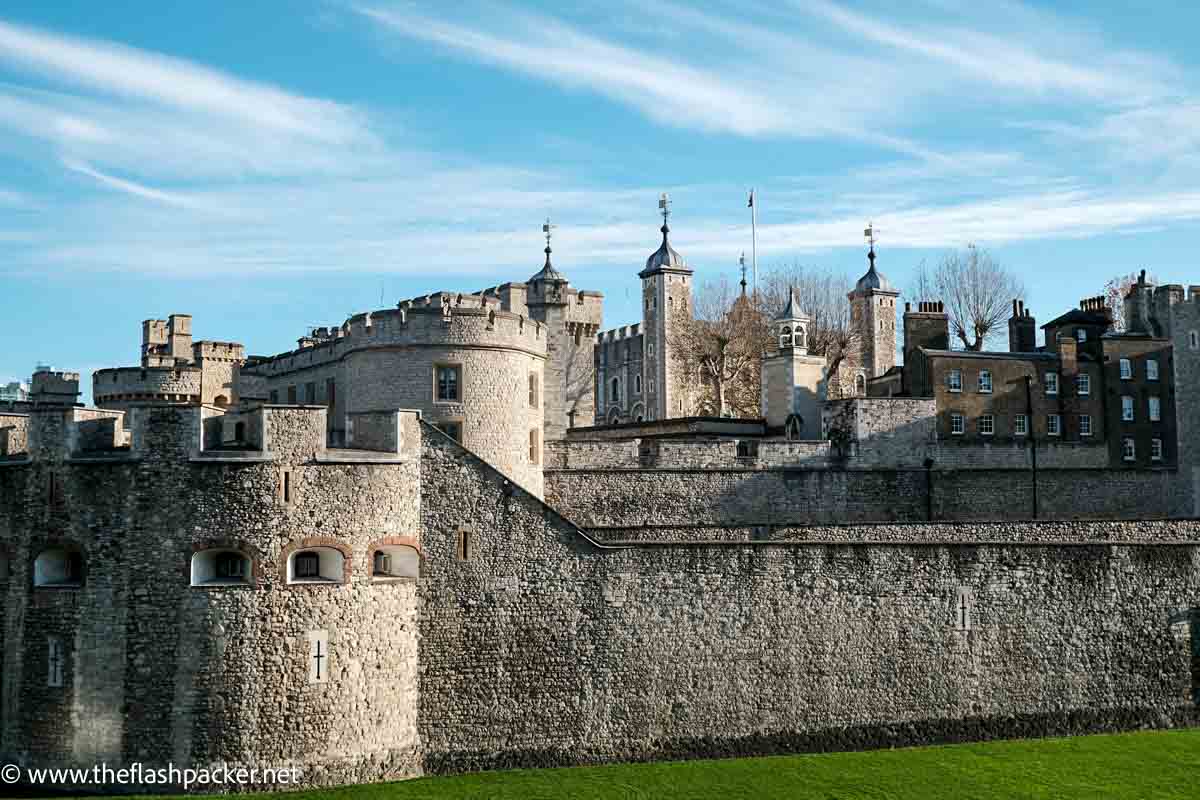
One of London’s four UNESCO World Heritage Sites is at the northern end of Tower Bridge: the Tower of London. Few places have played such a prominent and sustained role in English history as this imposing 1000-year-old fortress.
Built by William the Conqueror in the 11th Century to protect London, and as a symbol of his power, the Tower of London has been the setting for pivotal historical events in European history. This includes the execution of three English queens – Anne Boleyn, Catherine Howard and Jane Grey – and the imprisonment of other monarchs and princes who didn’t meet such a grisly fate.
Today’s visitors head to the Tower of London to gawp at the crown jewels, which include those worn by the monarch at the coronation and the opening of Parliament, and to have their photograph taken next to one of the Beefeaters entrusted with guarding the Tower.
The Beefeaters, or Yeoman Warders, have the equally important task of caring for the resident flock of ravens. Legend has it that the Tower of London— and the monarchy — will fall if the ravens ever leave the fortress.
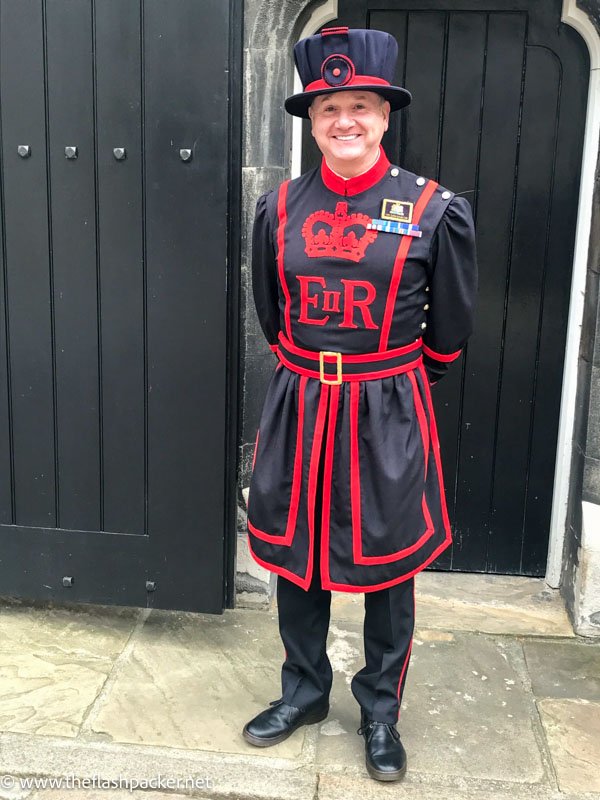
This 700-year-old ritual forms part of the locking up of the Tower of London is English pomp and circumstance at its very best and takes place every evening at 21:53. Tickets are released online every six months but sell out quickly.
I attended this event a few years ago and was not only enchanted by the ages-old ritual, but also felt that there is something special about being in the Tower of London after hours.
Closest Tube station to the Tower of London: Tower Hill
READ THIS NEXT >> 15 Insider Tips for Visiting the Tower of London
3. St. Paul’s Cathedral
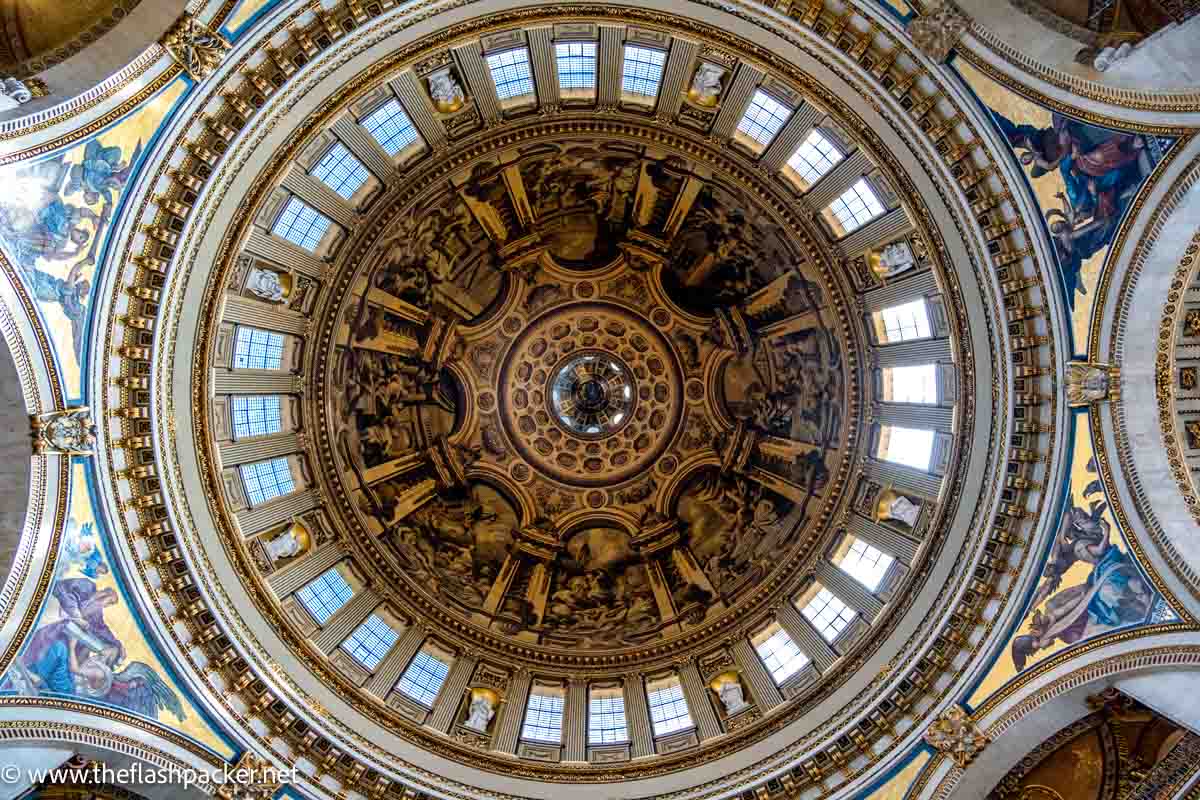
Built at the highest point of the City of London, St. Paul’s Cathedral is a landmark in the truest sense of the word. The sheer beauty of St. Paul’s Cathedral, both inside and out, always takes me aback.
But its appeal goes deeper than the cathedral’s architectural design. To me, St. Paul’s is a symbol of the resilience of London itself.
Built by the great Sir Christopher Wren after the devastation wrought by the Great Fire of London in 1666, St Paul’s is the fifth cathedral to have stood on this site since 604AD.
Its Baroque splendour has been a worthy setting for many ceremonial events, including the funeral of Sir Winston Churchill and the wedding of Prince Charles and Lady Diana Spencer in 1981. The cathedral’s crypt is the resting place of some of England’s greatest heroes, including Admiral Lord Nelson and the Duke of Wellington, and houses monuments to conflicts fought across the globe.
Other visitor favourites when visiting the historical landmark include testing the acoustic quirks of the Whispering Gallery and climbing to the exterior Golden Gallery for spectacular views across London.
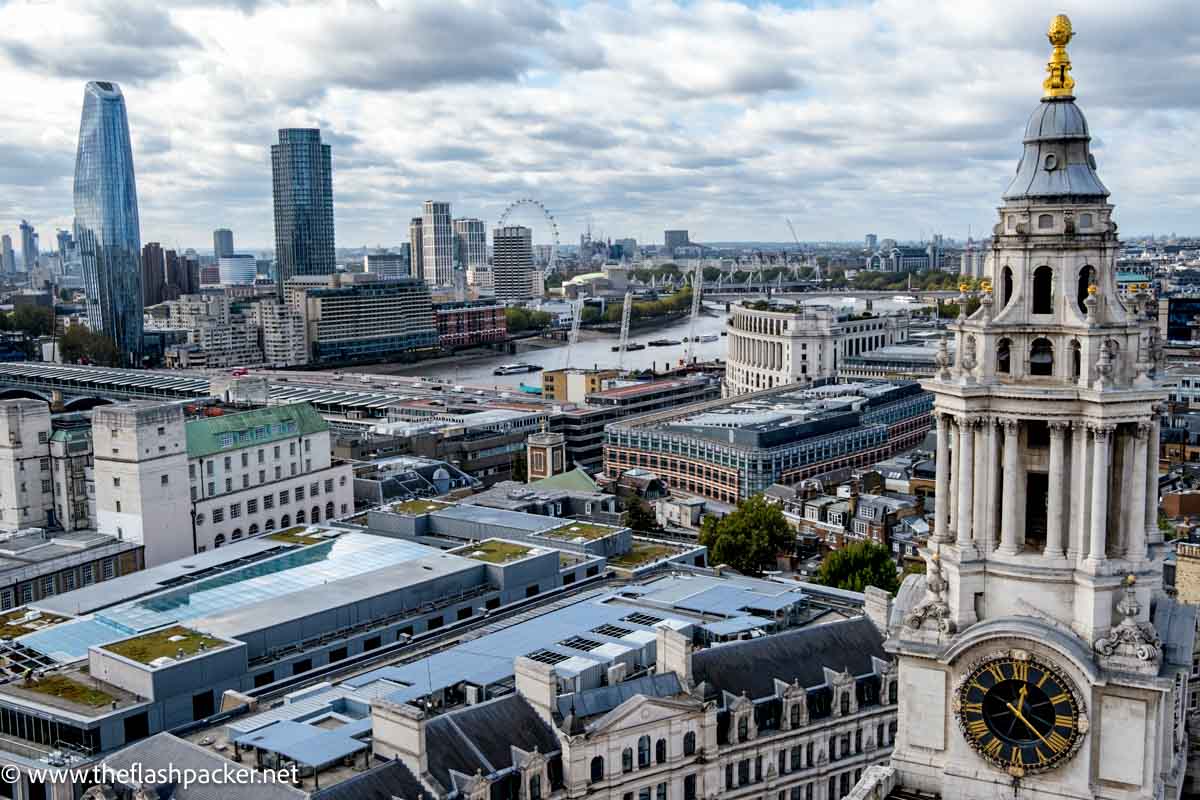
Closest Tube station to St. Paul’s Cathedral: St. Paul’s
4. The Shard
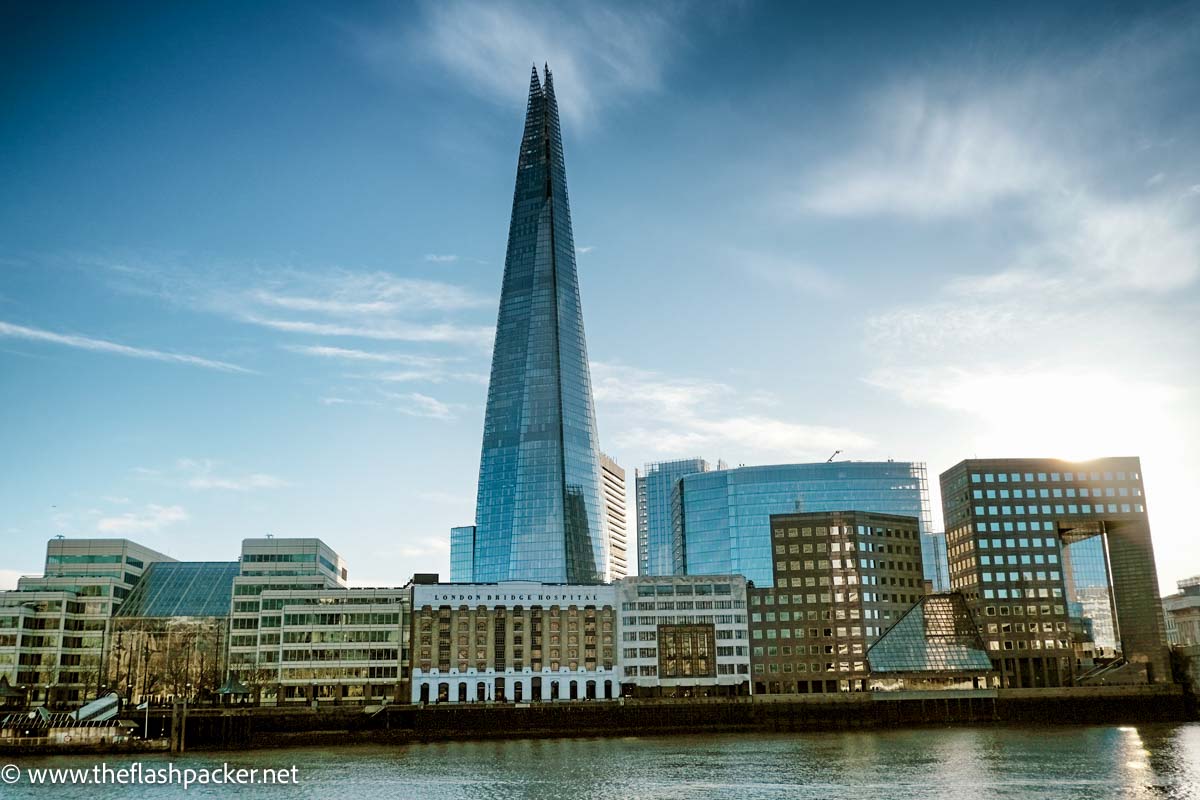
Dominating the London skyline is a spire of splintered glass.
Although a relative youngster, the Shard has quickly become one of London’s most iconic buildings. Also known as the Shard of Glass, the 72-storey building designed by the famous architect Renzo Piano is the tallest building in the UK and the sixth tallest building in Europe.
The Shard is occupied by office space, three restaurants, residential apartments and the UK’s loftiest viewing platform, The View from The Shard. General entry tickets to The View from The Shard are pricy, but it is possible to get these great views of London for free. Well, sort of.
If you’re not that bothered about going all the way up to The View (levels 68, 69 and 72) you can dine at AquaShard on level 31 and still benefit from great views. It’s not the cheapest place in London to eat, nor is it stupidly expensive. And you need to offset this cost against the cost of a ticket to The View.
One of the best views of London is from the toilets of AquaShard!
Closest Tube stations to the Shard: Borough or London Bridge
READ THIS NEXT>> How to Visit The Shard for Free: A Local’s Guide
5. London Eye
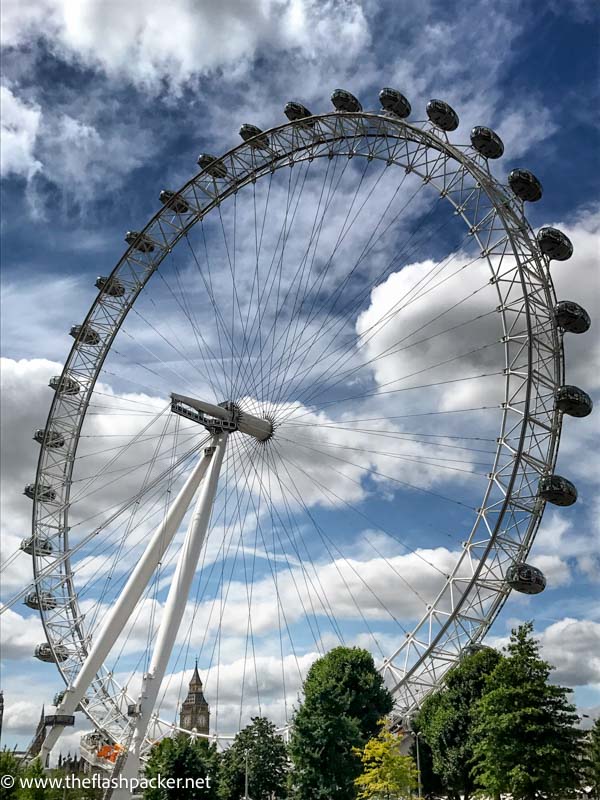
Formally known as the Millennium Wheel, the London Eye has been credited with sparking a resurgence of Ferris wheel construction across the globe.
This revolving observation deck on London’s South Bank was scheduled to be dismantled in 2005. However, its popularity saved it from the scrap yard and secured its place as a permanent London landmark.
It takes around 30 minutes to complete a revolution in this most popular paid attraction in the UK.
Closest Tube station to the London Eye: Waterloo
6. Houses of Parliament & Big Ben
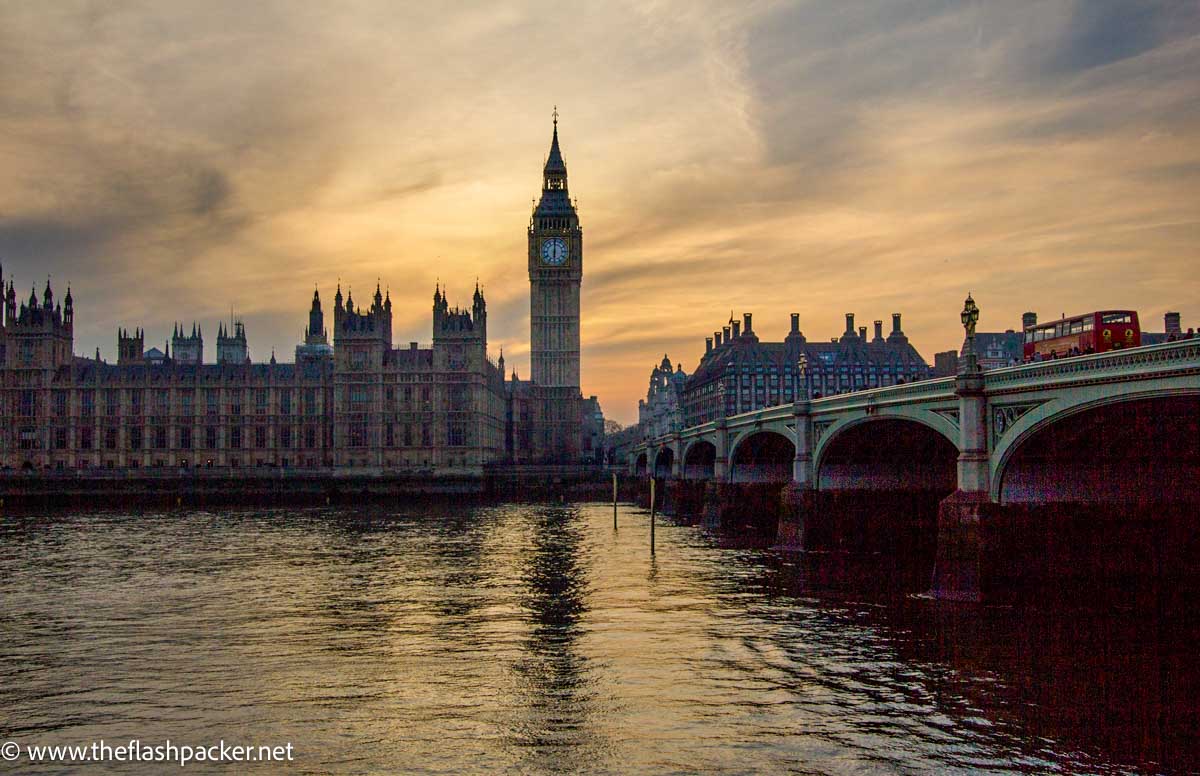
There are few more iconic London landmarks than the UNESCO-listed Palace of Westminster, better known as the Houses of Parliament. As the meeting place of the British Government and the centre of political life and power in the UK, the Palace of Westminster has a rich history spanning over 900 years and has been the stage for high drama.
Sitting on the north bank of the Thames, across the river from the London Eye, the building we see today is Victorian Gothic Revival in all its pointy perfection. For this we can thank Sir Charles Barry – he was also responsible for Highclere Castle where Downton Abbey is filmed – who was ably assisted by Augustus Pugin, better known for designing churches, including St. Mary’s Cathedral in Newcastle.
Book a guided tour of the Palace of Westminster here.
Closest Tube station to the Houses of Parliament & Big Ben: Westminster
7. London Tube Stations
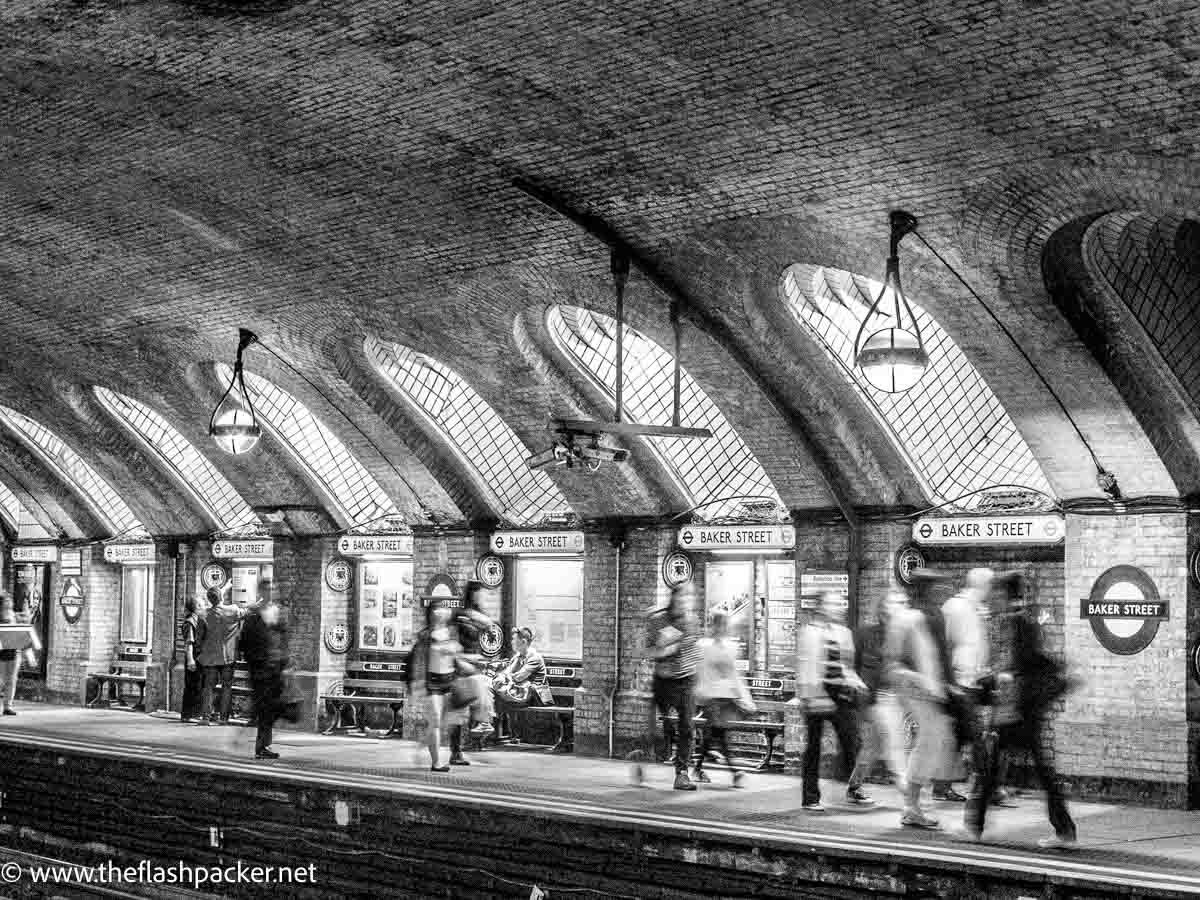
Whilst many of London’s Tube stations are unexciting, others are works of art. But, as a whole, they are iconic.
London Underground, commonly referred to as the Tube, is the metro system serving Greater London and stretching out to the home counties of Buckinghamshire, Essex and Hertfordshire. Although undeniably functional, some Tube stations are so striking as to stop you in your tracks (no pun intended).
From the steel and glass of big, brash Canary Wharf Tube station to the exposed bricks and Sherlock tiles of Baker Street and the Eduardo Paolozzi mosaics of Tottenham Court Road, there are many architectural gems.
However, my favourites are the Art Deco stations of suburban London, most of which were designed by the architect Charles Holden. East Finchley on the Northern Line is a great example of this 1930s aesthetic.
8. The River Thames
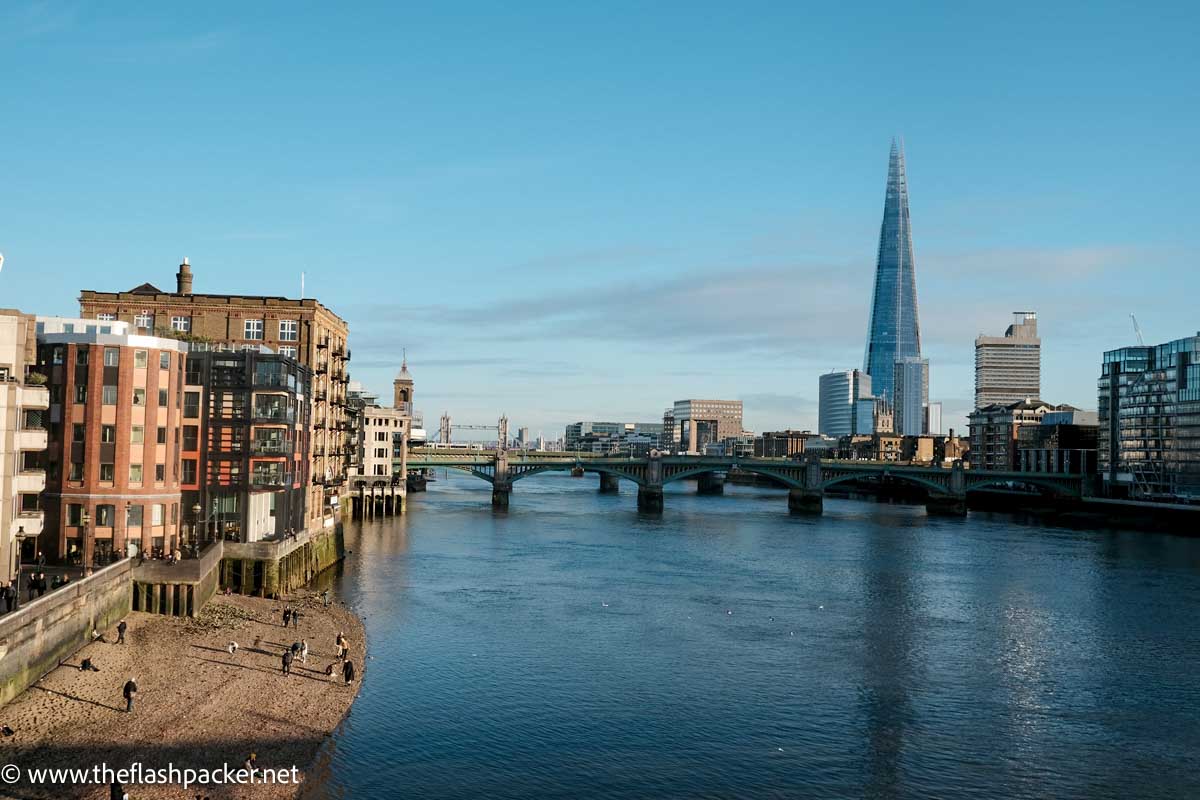
Rising as a small trickle in the Cotswolds, the Thames flows for over 210 miles through the heart of England into the centre of London and through the estuary into the North Sea. Over the millennia the River Thames has been an economic resource, a maritime route, a freshwater source, a source of food and, more recently, a leisure facility.
As most of London’s bucket list attractions are along the river, taking a walk along the lively South Bank of the Thames is a fabulous way to take in the sights if you are short on time. Alternatively, hop on one of the riverboats churning through its silty waters. If you are more intrepid, rent a kayak or raise your heart rate by taking a ride in a RIB.
9. Trafalgar Square
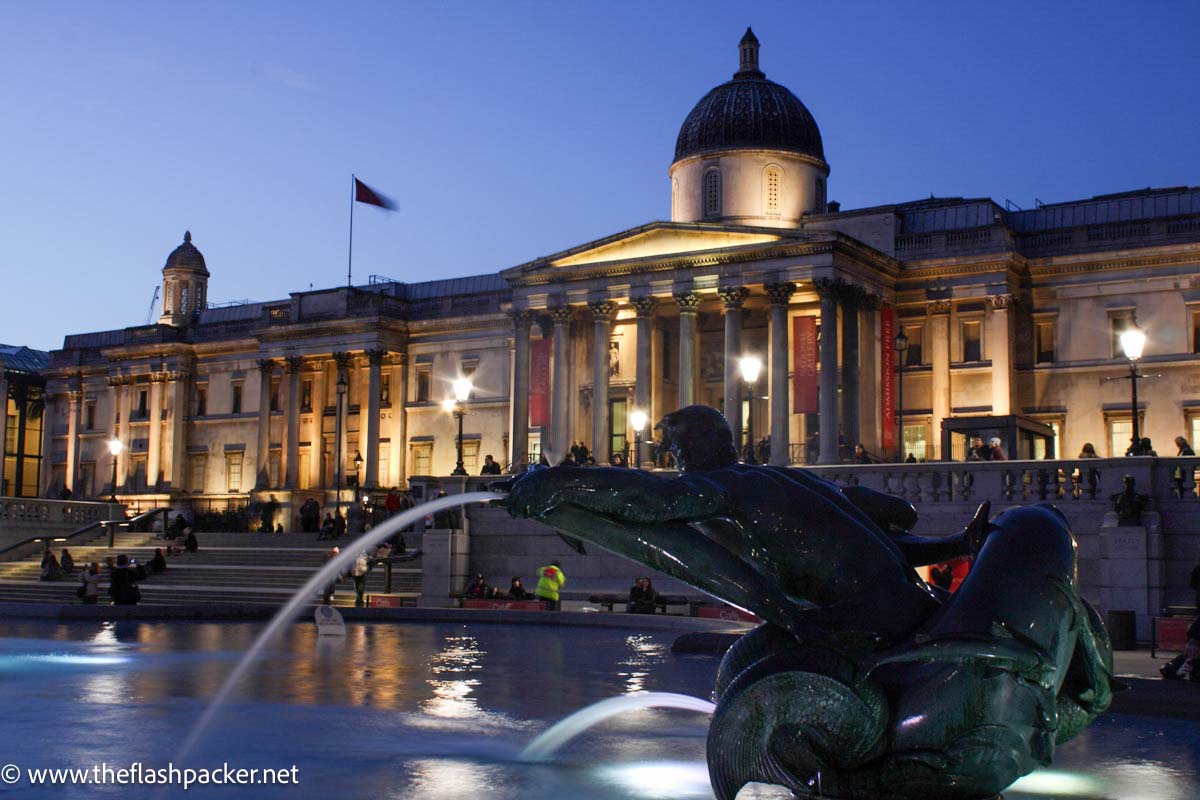
At the end of The Mall, one of London’s most famous streets, is Trafalgar Square, the best known public square in London.
Featuring majestic fountains with centrepieces designed by Sir Edwin Lutyens, and flanked by landmark buildings that include the National Gallery and St Martin-in-the-Fields, the square continues to be the setting for political demonstrations and cultural celebrations.
Whilst in the area, try to catch a free lunchtime concert in St. Martins in the Fields. The church also has a vast, and inexpensive, café in its crypt. The perfect place to stop for lunch!
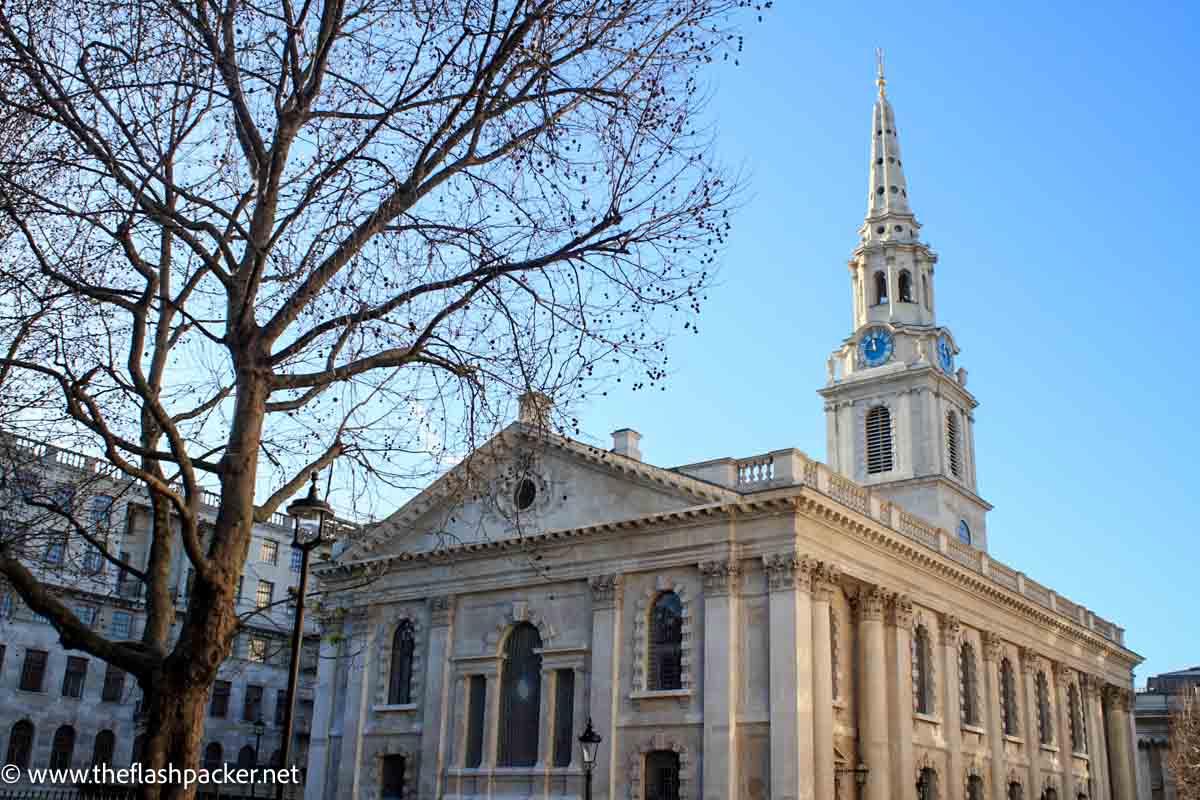
Fittingly for a square that commemorates the Battle of Trafalgar, a monument to Admiral Nelson takes pride of place. Nelson’s Column, an iconic London landmark in its own right, is guarded by four lions sculpted by Sir Edwin Landseer.
Visit during the Holiday season to see the giant Norwegian spruce (or fir) which has been donated to the square by Oslo since 1947. Its lights are usually switched on twelve days before the 25th of December and it is taken down on the twelfth night of Christmas.
Before you leave Trafalgar Square, take a look at the so-called fourth plinth in the corner of the square near the National Gallery’s Sainsbury Wing entrance. After being unoccupied for years, this statue plinth is now used to showcase contemporary artworks.
Closest Tube stations to Trafalgar Square: Charing Cross, Leicester Square or Piccadilly Circus
10. Battersea Power Station
This is one of my favourite buildings in London and its chimneys are an iconic part of the capital’s skyline.
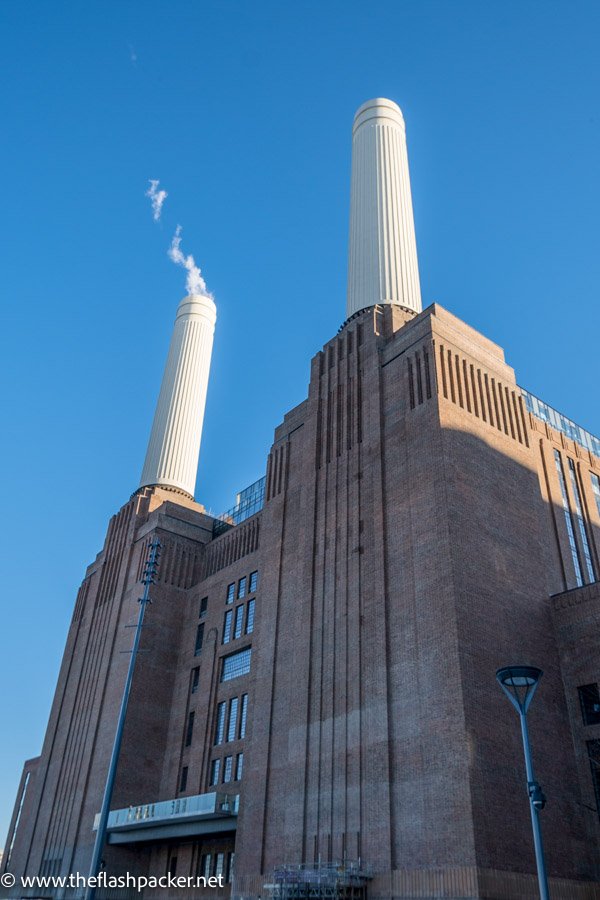
Those chimneys have graced the cover of Pink Floyd’s 1977 album Animals, and have been featured in The Beatles’ movie Help!, as well as other international films and TV shows.
Battersea Power Station is a Grade II-listed building and was operational until 1983. After failed attempts to develop the site, it has been brought back to life as a complex that includes luxury accommodation, restaurants, bars, and cultural venues.
Closest Tube station to Battersea Power Station: Battersea Power Station
Famous Buildings in London
11. City Hall
Designed by the world-famous Foster + Partners, the former home of the Mayor of London opened in 2002. It served as the headquarters of the Greater London Authority (GLA) until December 2021.
City Hall’s unusual, bulbous shape has led to comparisons with Darth Vader’s helmet, a misshapen egg, and a woodlouse. Former mayor Ken Livingstone called it a “glass testicle.” In the same vein, his successor, Boris Johnson, referred to it as “The Glass Gonad.”
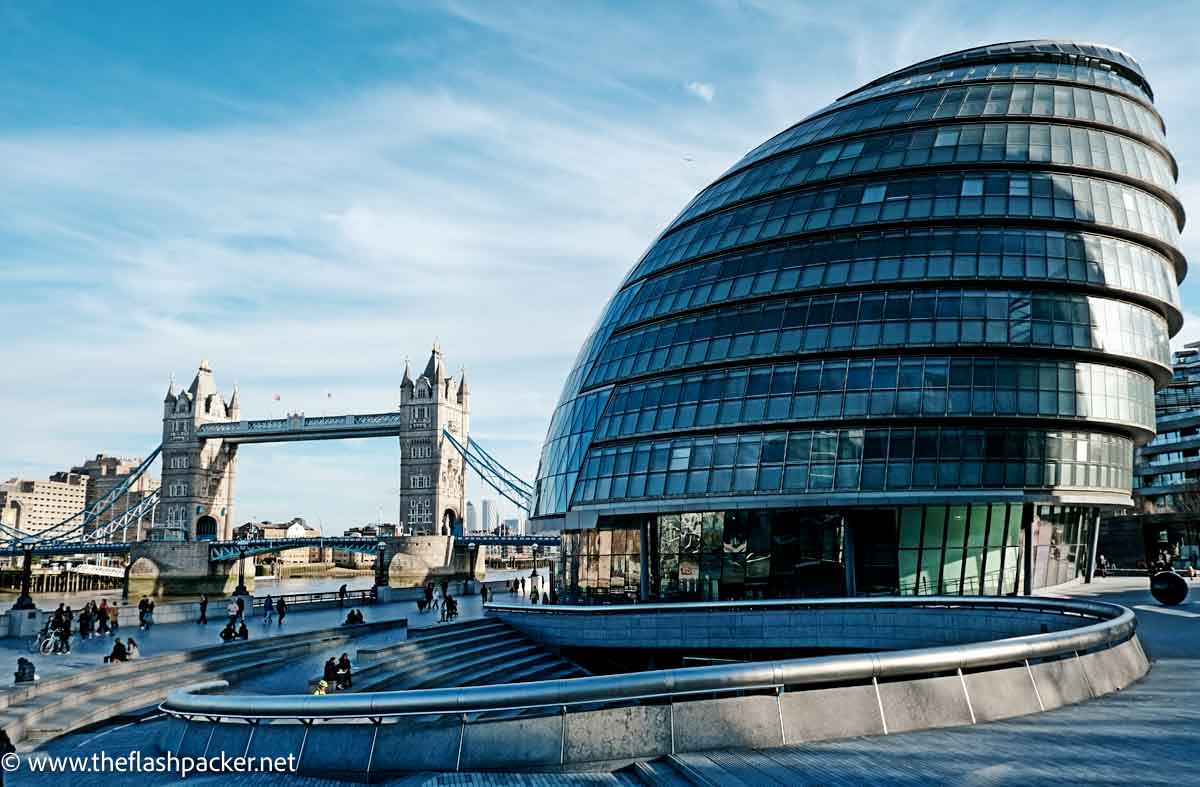
Closest Tube stations to City Hall: London Bridge and Tower Hill
12. The Gherkin
On the opposite side of the river is the instantly recognisable 30 St Mary Axe, better known as the Gherkin. Situated in the City of London on the former site of the Baltic Exchange and Chamber of Shipping, which was badly damaged by an IRA bomb in 1992, this commercial skyscraper is a fabulous example of neo-futuristic architecture.
Designed by the legendary Sir Norman Foster, this glass-fronted tower built in the shape of a round vegetable and featuring a distinctive spiral design, opened in 2004. It catches the eye at any time of the day, but it’s dazzling when lit up at night.
Although the Gherkin isn’t normally open to the public, like the Shard it does have a bar and restaurant with a view: Helix Restaurant and Iris Bar, which are located on the top floors of the building.
Closest Tube stations to the Gherkin: Liverpool Street, Aldgate or Aldgate East
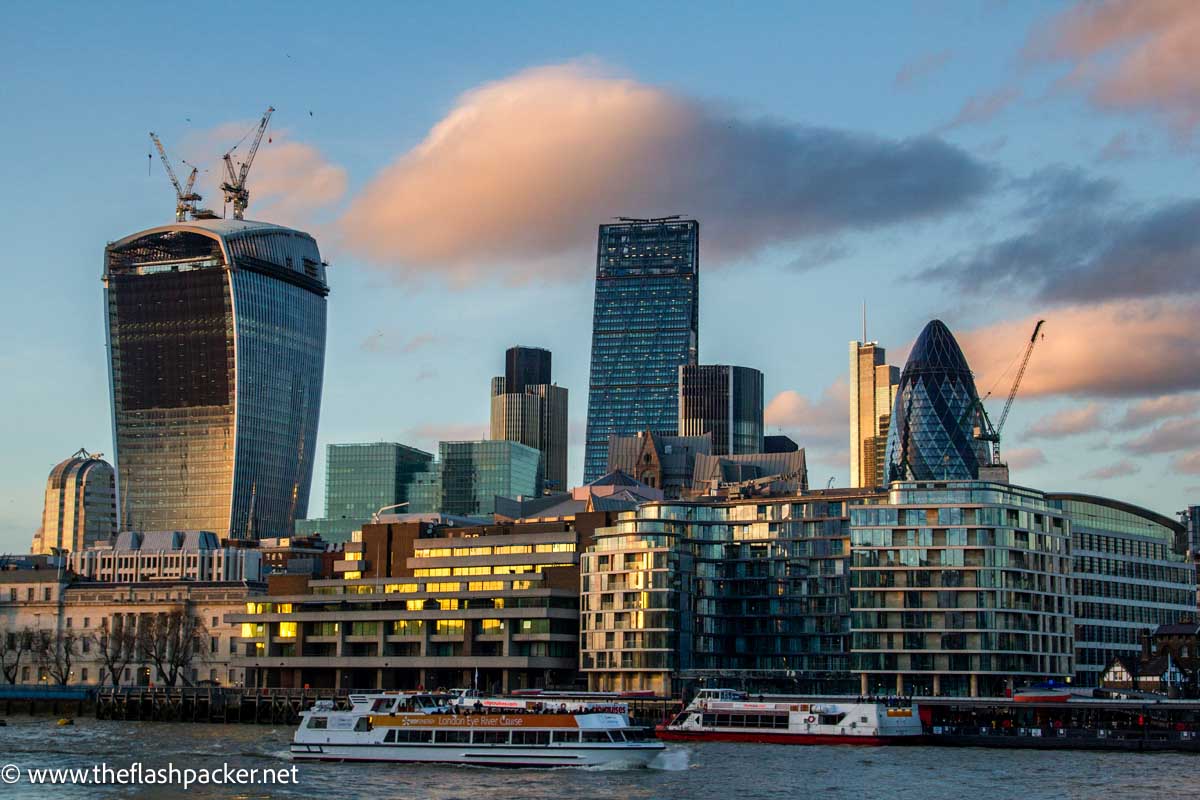
13. The Walkie-Talkie building (+ Sky Garden)
20 Fenchurch Street, also known as the Walkie Talkie building, towers 160 meters above street level dwarfing the Gothic spires of the City’s conservation area. Whilst some admire its striking design, others are less than thrilled about its bulk bullying its older, more restrained neighbours.
But the Walkie-Talkie building is not any old building. It is also home to the Sky Garden, London’s very own Hanging Gardens of Babylon, wrapped around the building’s upper floors.
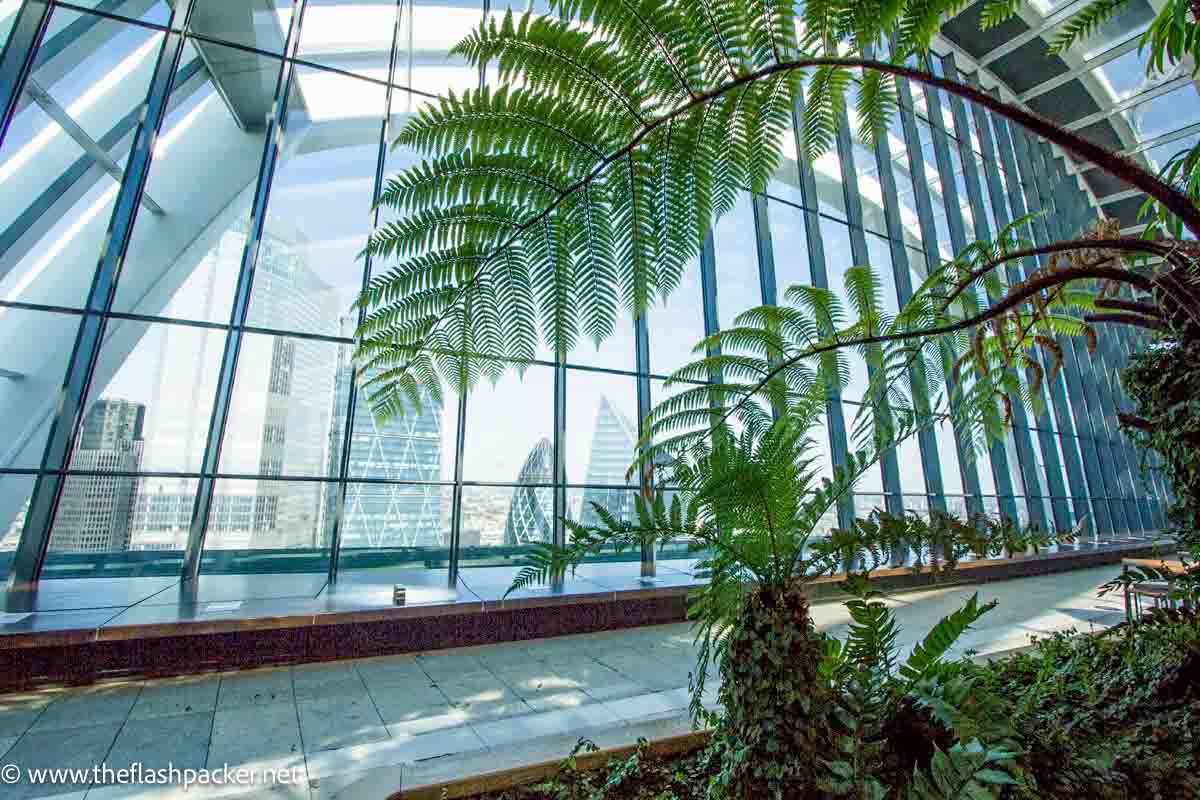
Visiting the Sky Garden is free and offers the best panoramic views of London. However, you do need to book a time slot in advance and as it is justifiably popular, you need to quick off the mark.
The Sky Garden is also home to a handful of bars and restaurants.
Closest Tube stations to the Walkie Talkie building: Monument, Bank or Cannon Street
READ THIS NEXT >> Visiting The Sky Garden, London: Tips From a Local Expert
14. Canary Wharf
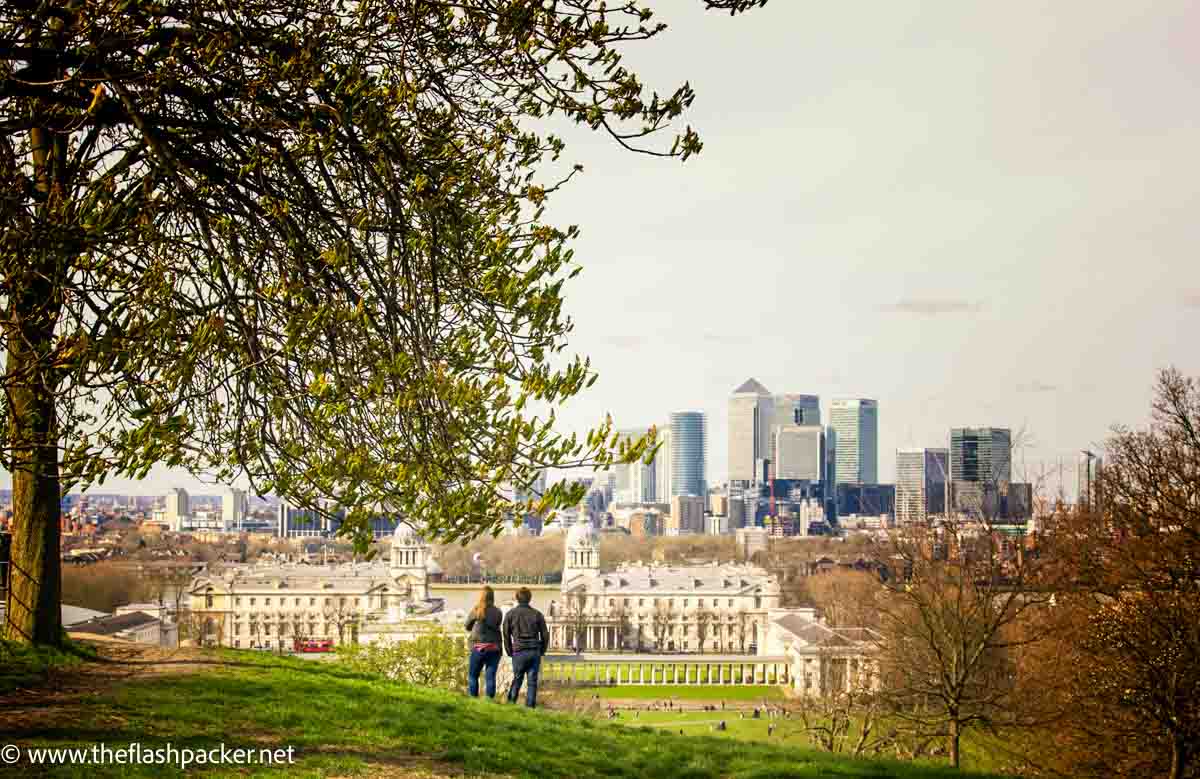
The financial district of Canary Wharf is visible from the terrace of the Sky Garden. But there’s more to this financial district on the Isle of Dogs in East London than meets the eye.
With its planned procession of skyscrapers and elegant bridges, Canary Wharf’s architecture is markedly different from the rest of London. One Canada Square, its architectural centrepiece, is the second tallest building in the UK after The Shard, standing 236 metres high. Sadly, it is not normally open to the public.
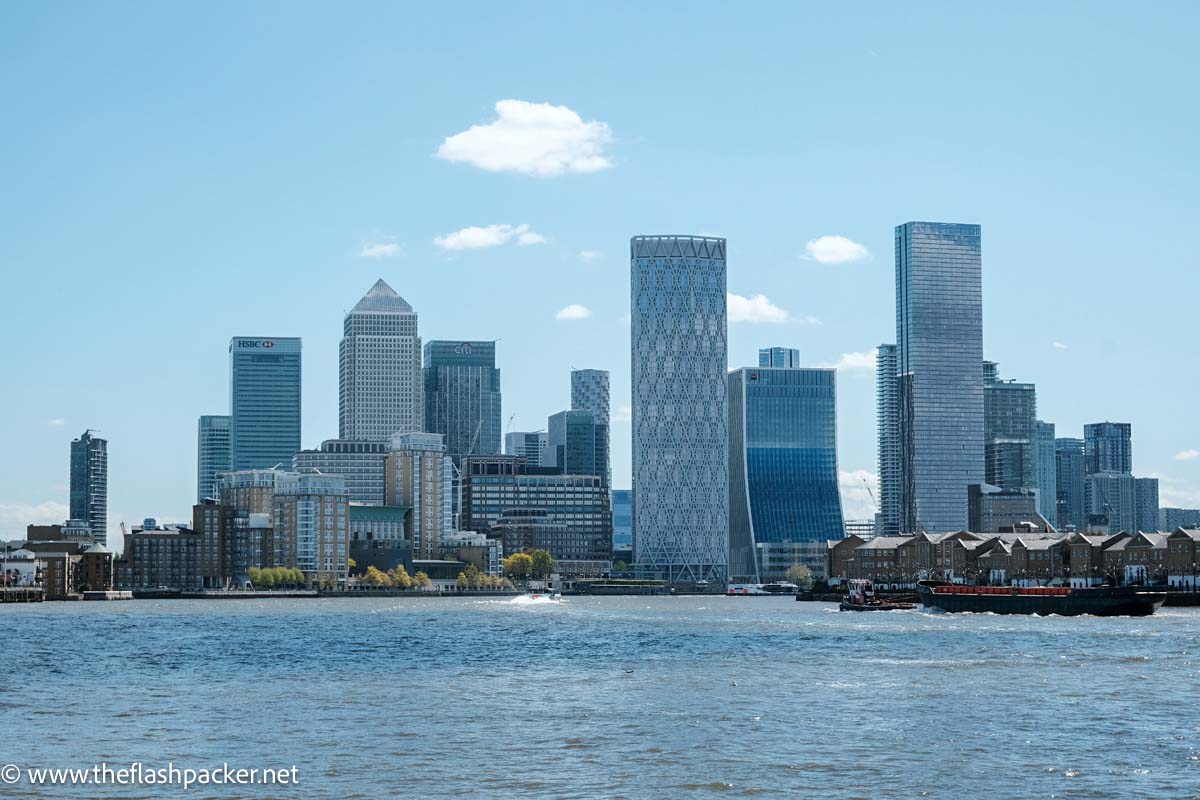
The rich history of Canary Wharf and other London ports is showcased in the wonderful Museum of London Docklands. And if you fancy sampling a local brew (recommended!), join a tour of the Meantime Brewery.
Closest Tube station to Canary Wharf: Canary Wharf
15. Alexandra Palace
Ally Pally, as it is affectionately known, is located in Alexandra Park, which has been a leafy escape for Londoners since Victorian times. From its elevated position, there are fine views over London.
Alexandra Palace has many claims to fame.
During the First and Second World Wars, it hosted refugees and in 1940 it was a staging area for troops returning from Dunkirk. It is an iconic gig venue. Its hallowed walls have reverberated to the sounds of Gracie Fields, The Rolling Stones, Pink Floyd, The Who, Led Zeppelin and Queen (to name but a few).
In November 1936, the BBC launched the world’s first full television service at Alexandra Palace.
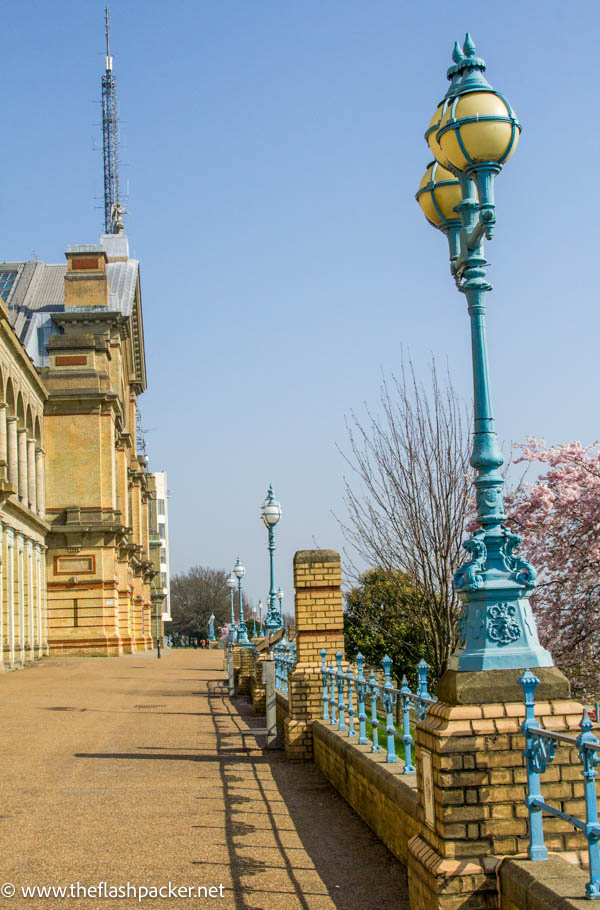
Closest station to Alexandra Palace: Alexandra Palace (mainline train service)
16. Smithfield Market
Smithfield Market is the largest meat market in the UK and one of the oldest. There has been a livestock market on this site in the heart of the City of London for over 800 years.
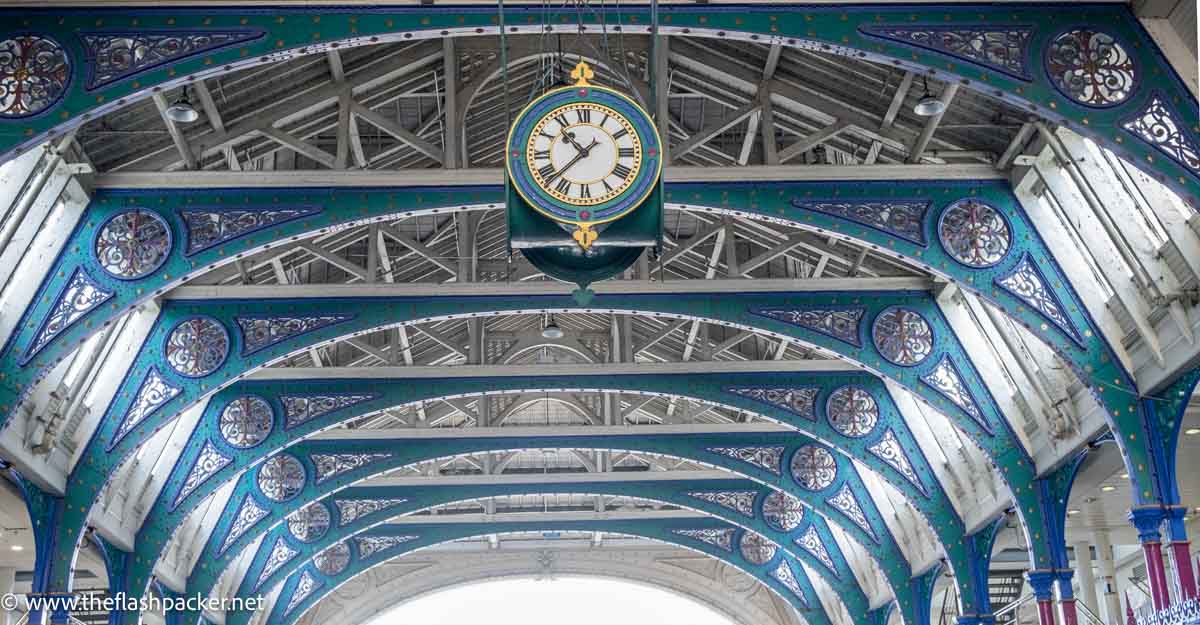
You need to set your alarm clock to silly o’clock to take a good look inside Smithfield. Although some stalls will be open for business until mid-morning, to see the market at its best you should aim to get there by 7 am.
The buildings of Smithfield Market were commissioned in 1866 and completed in 1868
Closest Tube stations to Smithfield Market: Farringdon and Barbican
17. Shakespeare’s Globe
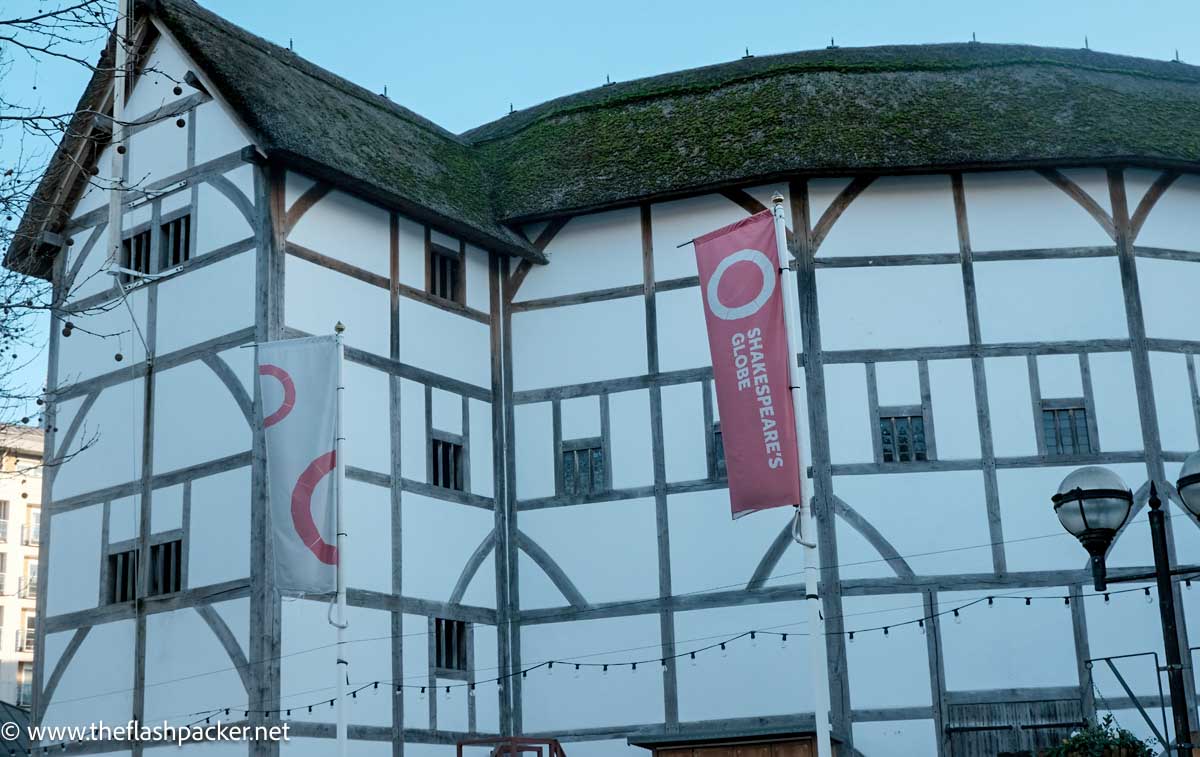
Elizabethan theatre is brought vividly to life in one of London’s most famous buildings, Shakespeare’s Globe. Built on the riverside a few hundred meters from the original Globe, where many of Shakespeare’s plays were first performed, this detailed reproduction of an Elizabethan theatre is justly world-renowned.
I’ve seen a few productions here and it is an unforgettable experience. In an attempt to reproduce the bawdy atmosphere of 16th-century theatre-going, “groundlings” stand in the central space in front of the stage and are encouraged to clap and jeer.
As Shakespeare’s Globe is open to the elements (although the seats have some shelter), the theatre operates a summer programme only. However, the Globe offers year-round tours of the theatre where you can find out more about Shakespeare and other Elizabethan dramatists, as well as the challenges faced by Sam Wannamaker in establishing the theatre.
Closest Tube stations to Shakespeare’s Globe: Southwark, Borough, London Bridge or Waterloo
18. Borough Market
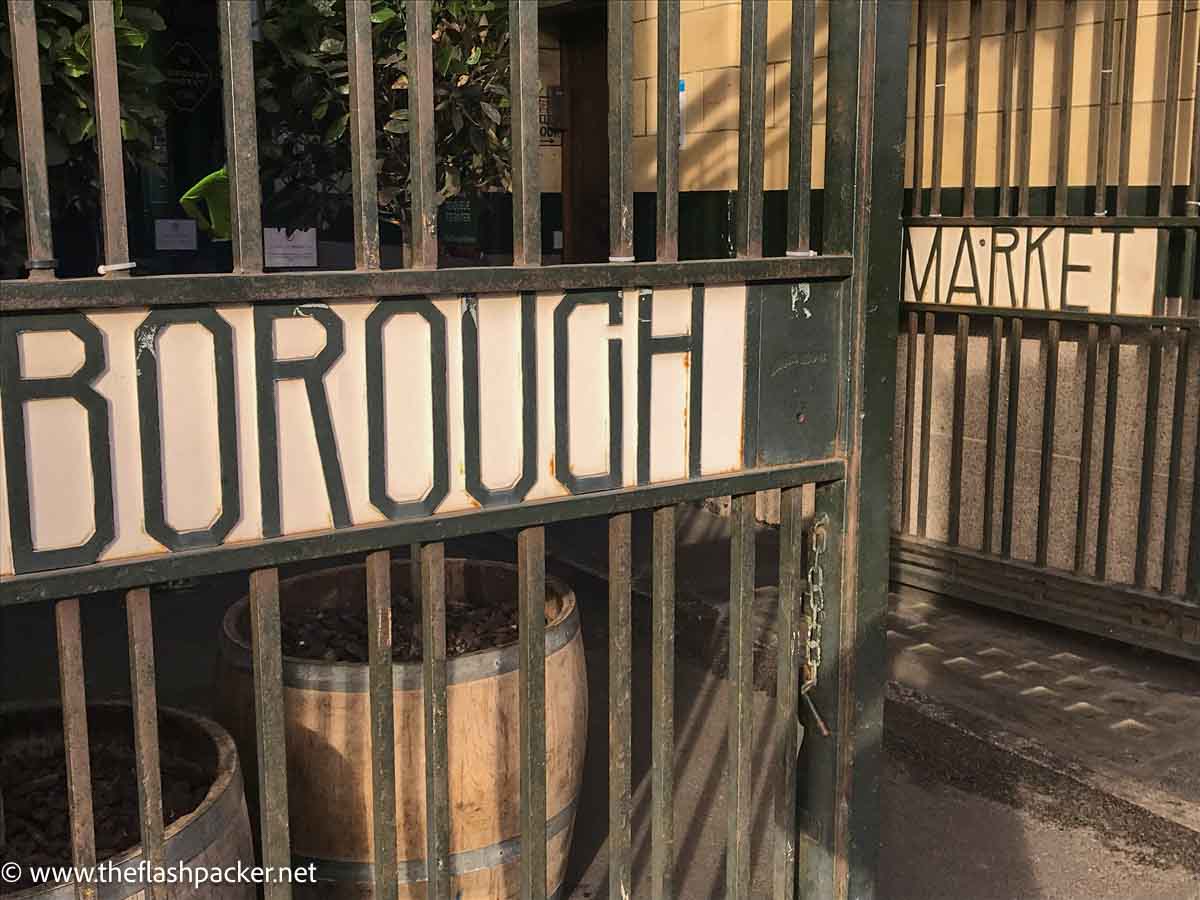
Beloved of foodies and grazers, Borough Market is a short walk from Shakespeare’s Globe. Originally a wholesale market, this culinary London landmark sources both British and international produce.
The present building dates from the 19th Century, although it’s thought that there has been a market on the site for at least 800 years.
Whilst I wouldn’t go as far as to say that this is a must-see London landmark, if you are in the area there is no better place to stop for lunch.
Borough Market is popular as a film location, and the market and the surrounding streets feature in movies including Bridget Jones’s Diary, Harry Potter and the Prisoner of Azkaban and Lock, Stock and Two Smoking Barrels.
Closest Tube stations to Borough Market: Borough or London Bridge
19. Covent Garden Market
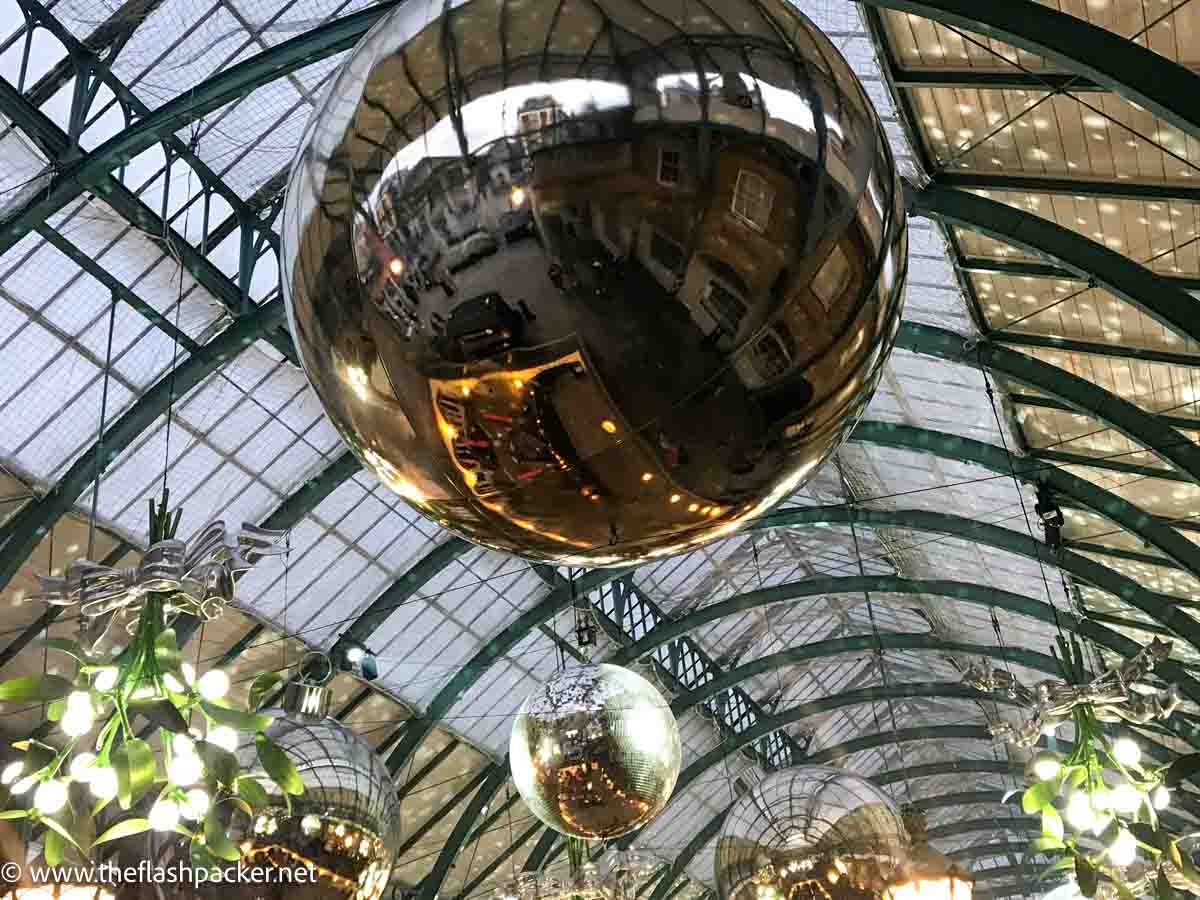
Welcome to a garden that isn’t really a garden.
Formerly home to a fruit-and-vegetable market – and an abundance of brothels! – this market relocated to Nine Elms in 1974 and the central building was reinvented as a shopping destination in 1980.
Again, Covent Garden would not be one of my favourite places to visit in London, largely because it can be SO busy. Visitors flock to Covent Garden in their droves to eat in its restaurants, drink in its bars, splash the cash in its shops & market stalls and be entertained by its street performers.
It is also home to St. Paul’s Church, also known as the Actors’ Church, the Royal Opera House and the London Transport Museum, all of which are well worth a visit.
Closest Tube stations to Covent Garden Market: Covent Garden. However, as this station suffers from congestion, particularly at peak times, I recommend using Leicester Square or Charing Cross which will only add an extra three or four minutes to your walking time.
20. St. Pancras Station
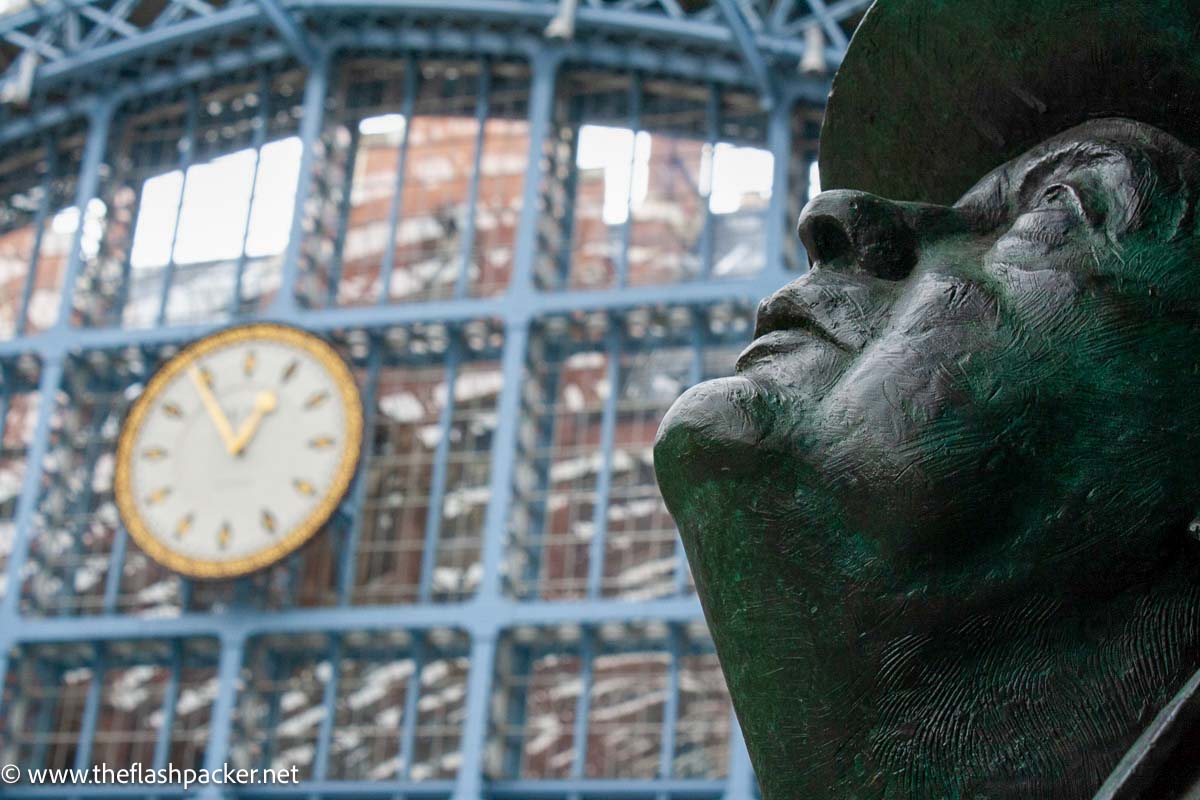
“A railway station is a London landmark?” you might ask. But this is a very special railway station.
The Victorians sure knew how to build train stations. Thanks to its mighty iron roof, the 19th Century Pancras Station laid claim to the largest free-spanning structure in the world.
However, the jewel in the crown was the dramatic red-brick Gothic Midland Hotel at the front of the station, designed by the prolific George Gilbert Scott.
By the middle of the twentieth century, the station was forlorn and unloved until a massive restoration project, completed in 2007, restored St. Pancras Station to its former glory. Today, it’s a magnificent space inside and out.
Don’t miss two statues on the upper level of the station: the John Betjeman statue and The Lovers statue under the replica station clock.
Closest Tube station to St. Pancras Station: King’s Cross St. Pancras Station
21. Royal Albert Hall
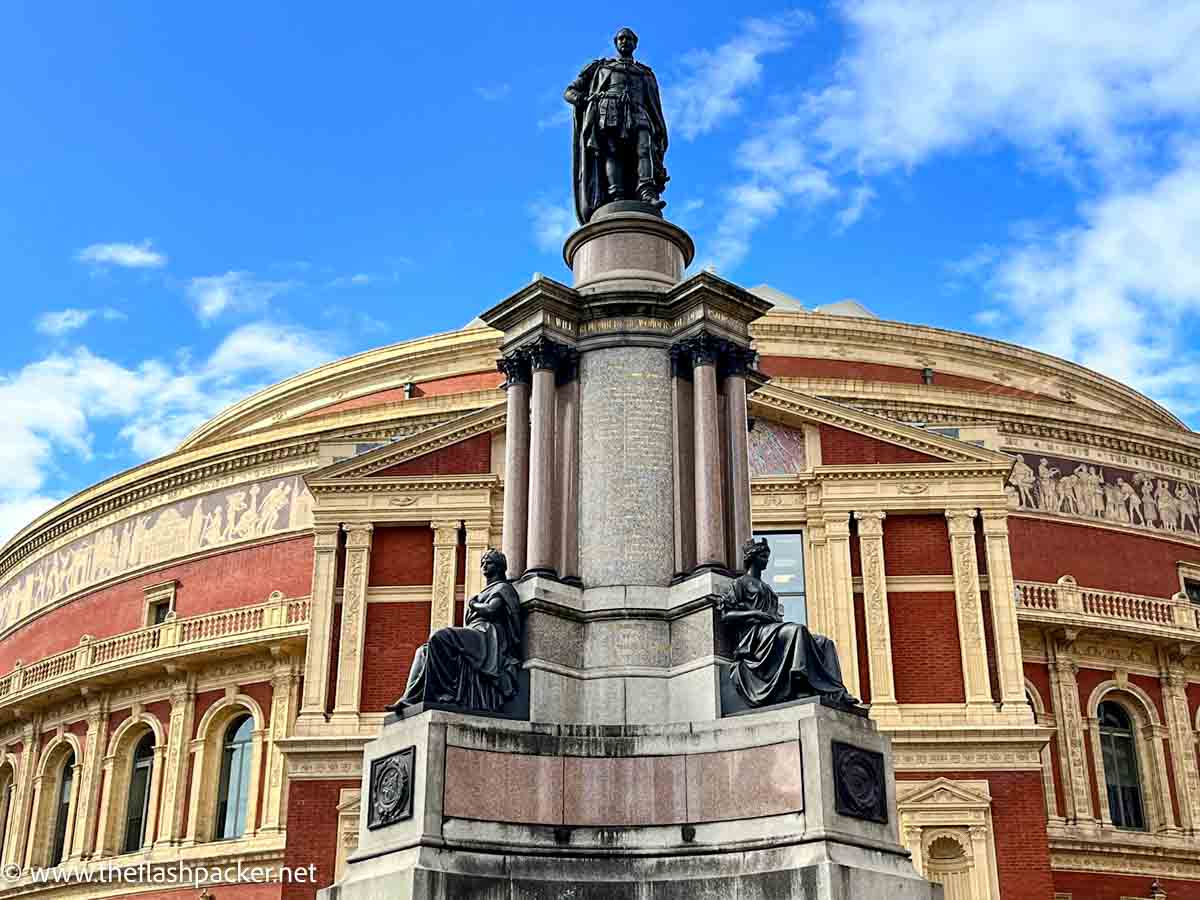
The Royal Albert Hall is one of the most striking Victorian buildings in London (and there are quite a few). Completed in 1871, this massive concert hall was modelled on Roman amphitheatres.
The plan was to call it the Hall of Arts and Sciences but Queen Victoria had other ideas. When she laid the foundation stone in 1868, she changed its name to Albert Hall, in memory of her beloved husband.
Although this venue is often used for Classical concerts, it is also the setting for other cultural events. Royal Albert Hall is most famously the setting for the annual “Proms“, an eight-week summer season of Classical music.
Closest Tube station to Royal Albert Hall: South Kensington
Historical Landmarks in London
22. Maritime Greenwich
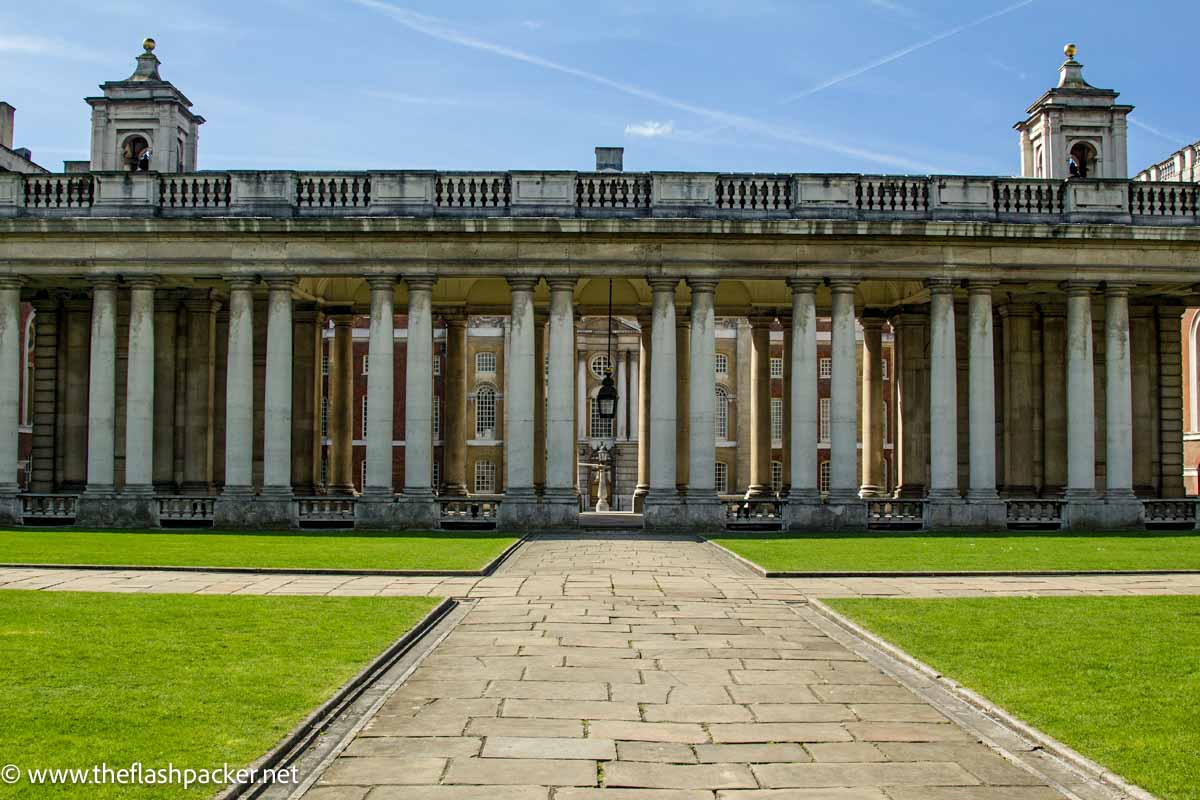
Maritime Greenwich is the third UNESCO World Heritage site in London.
Notable for being the place of Greenwich Mean Time (GMT) and the Prime Meridian of the world, Greenwich is also home to a collection of historic landmarks that showcase English artistic and scientific endeavours in the 17th and 18th centuries. Arranged in harmonious symmetry alongside the River Thames are the following:
- The Queen’s House – the work of Inigo Jones building, this was the first Palladian building in England.
- The Royal Naval Hospital – originally designed by Christopher Wren but further embellished by other architects, including Nicholas Hawksmoor.
- The Royal Park – expansive views over London and home to the Royal Observatory, Maritime Museum and Meridian Line.
- The Royal Observatory – the baseline for the world’s time zone system and for the measurement of longitude around the globe.
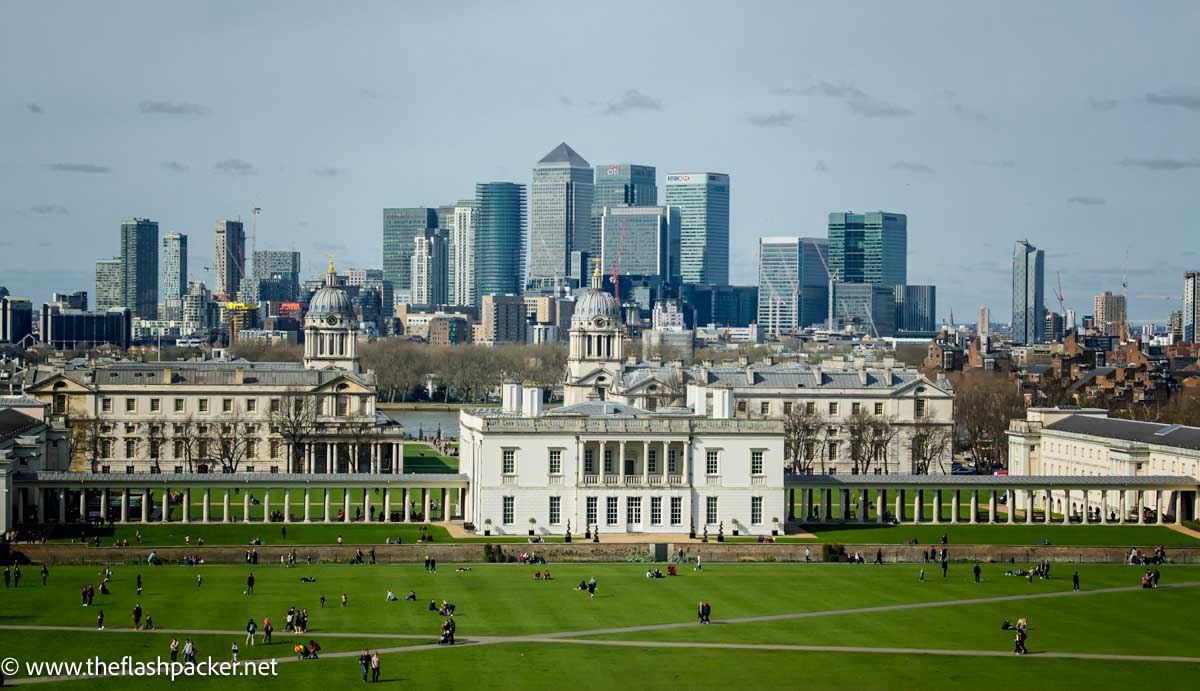
How to get to Maritime Greenwich: The closest stations are Cutty Sark DLR, Greenwich rail station and Maze Hill rail station
23. Westminster Abbey
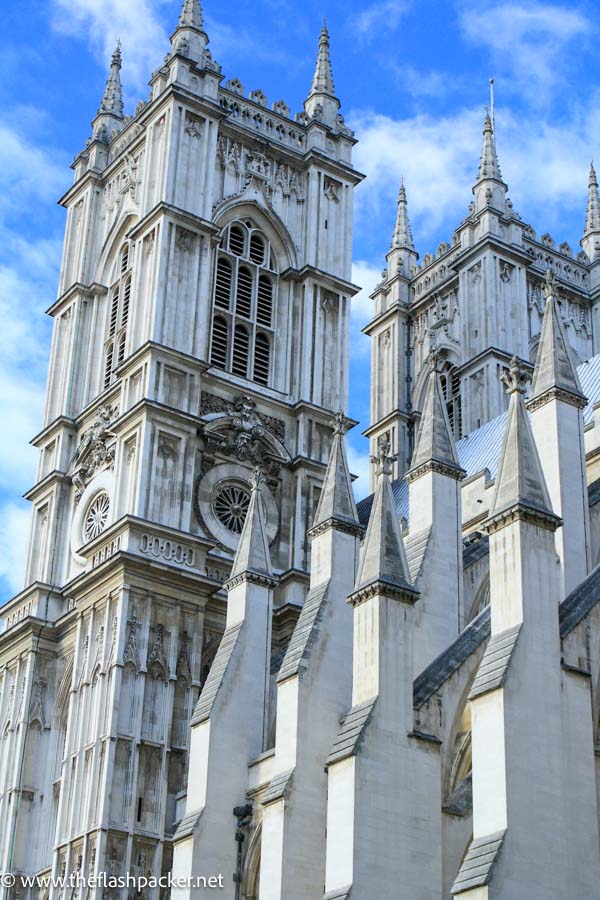
Together with the Palace of Westminster and St Margaret’s Church, Westminster Abbey has been denoted a UNESCO World Heritage site.
Founded by Benedictine monks in 960 AD, this Gothic masterpiece is steeped in English history. World-famous as the final resting place of 17 English monarchs, it also houses the tombs of writers, artists, scientists, and political leaders, including Rudyard Kipling, Sir Isaac Newton, Charles Dickens, Neville Chamberlain and Stephen Hawking.
Monarchs from the past thousand years have been crowned sitting on the Coronation Chair, and it’s also been the stage for royal weddings.
Closest Tube station to Westminster Abbey: Westminster
24. Buckingham Palace
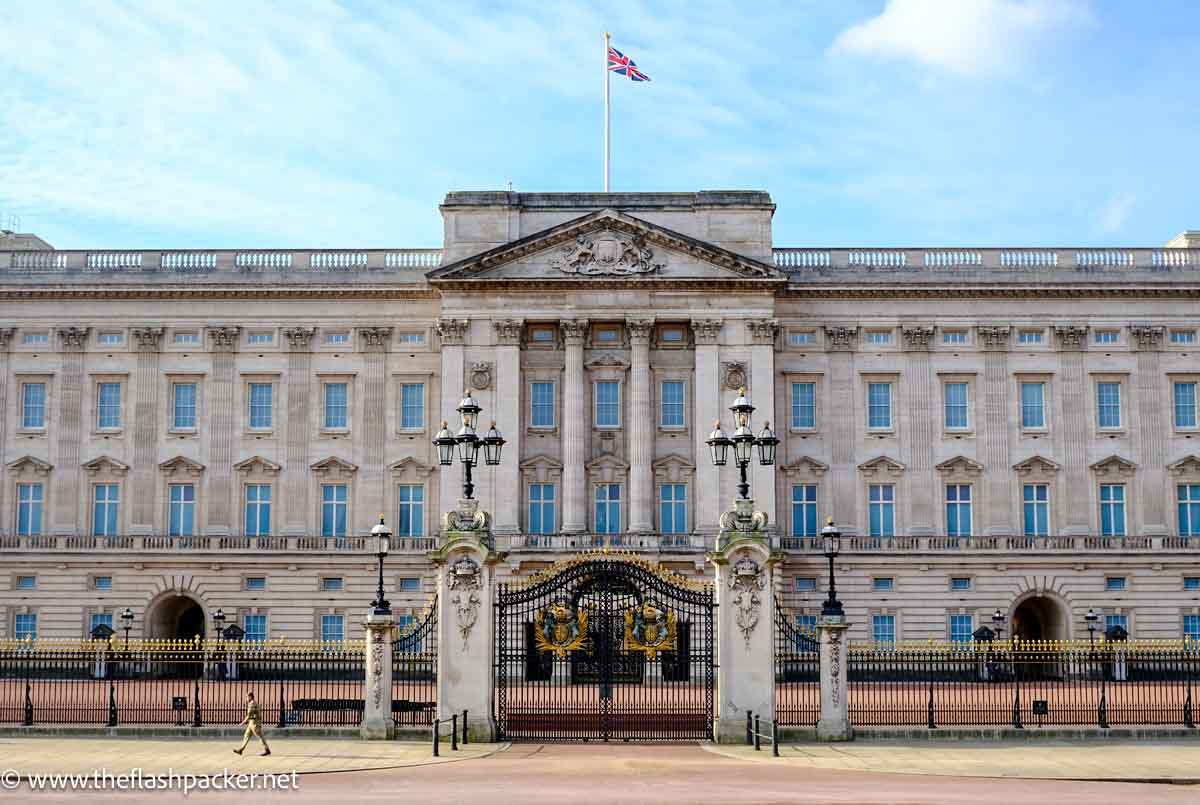
One of London’s most famous buildings, Buckingham Palace has been the official London royal residence since the time of Queen Victoria and is the administrative headquarters of the British monarch.
One of the most famous royal palaces in Europe, it also serves as the backdrop to the Changing of the Guard Ceremony. This takes place at 11 am on Monday, Wednesday, Friday, and Sunday and daily in the summer.
Do you want to walk in the footsteps of the Royals and Heads of State? If so, you can take a look at some of Buck House’s 775 rooms when the King takes his summer holiday at Balmoral Castle on a guided tour of the State Rooms.
Closest Tube stations to Buckingham Palace: Victoria, St. James’s Park or Green Park
25. Kensington Palace
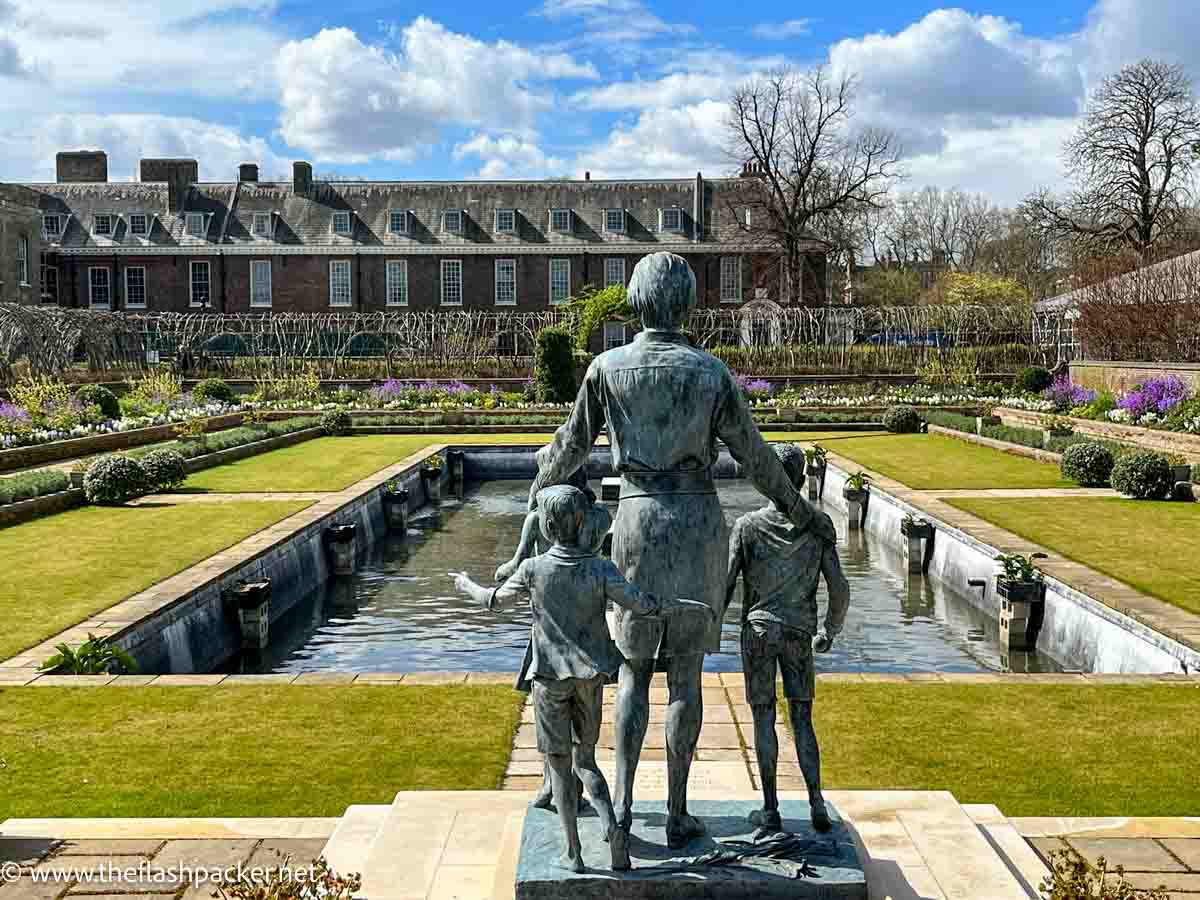
When William III and Mary came to the throne in 1689, they commissioned Christoper Wren to convert this mansion dating from 1605 into a place fit for a king and queen.
Kensington Palace is most interesting as the childhood home of Queen Victoria. It was here that the then Princess Victoria of Kent was awoken at 5 am to be told that her uncle, King William IV had died and she was now queen.
Today, half of this royal palace is occupied by lavish apartments; the rest is open to the public.
Closest Tube stations to Kensington Palace: High Street Kensington or Queensway
26. Hampton Court Palace
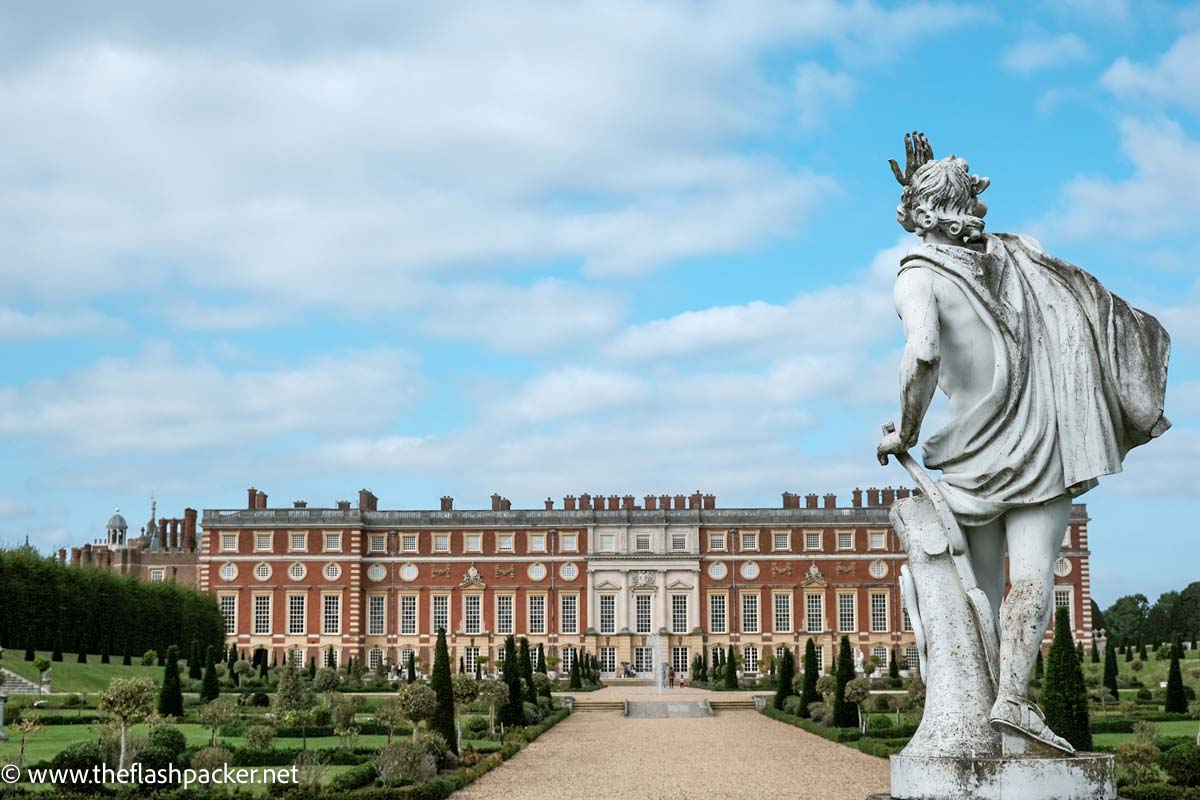
Few places stir the historical juices quite like Hampton Court Palace.
Thomas Wolsey, the powerful Archbishop of York to Henry VIII, began work on Hampton Court Palace in 1514. In an attempt to curry favour with the king, he handed his riverside residence to Henry in 1525.
That didn’t work out so well for him.
After the royal takeover, the palace was rebuilt and extended twice, most notably by William and Mary in 1690, who again used the services of Christopher Wren.
Closest station to Hampton Court Palace: Hampton Court (mainline)
27. Monument to the Great Fire of London
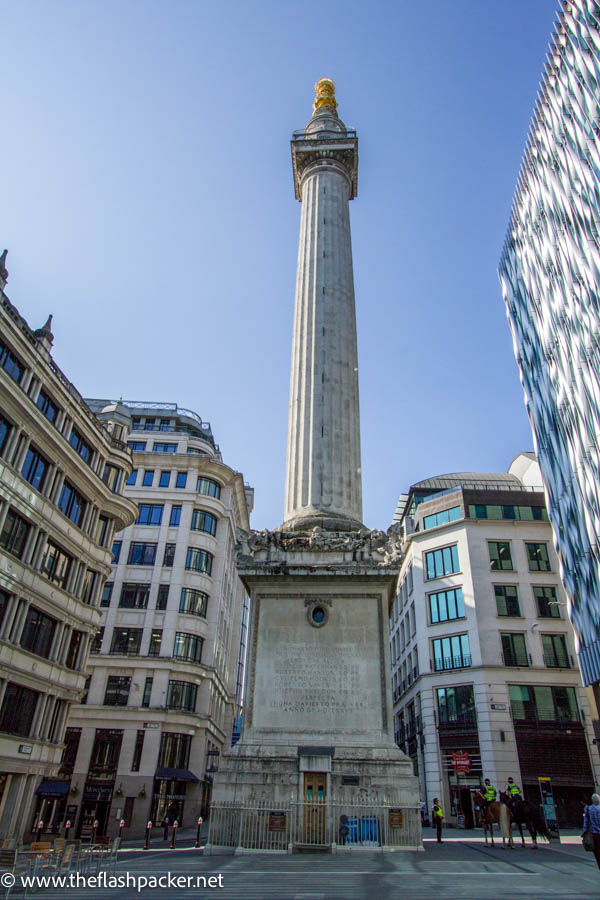
In September 1666, a spark leapt out from an oven in a bakery that stood at 23 Pudding Lane, one of London’s most historic streets. This resulted in an inferno that tore through the City of London.
This column, designed by Christopher Wren, commemorates the Great Fire of London, which destroyed 13,200 houses, 87 parish churches and St Paul’s Cathedral. Standing 205 feet high, the Monument to the Great Fire of London is the tallest isolated stone column in the world.
Climb the 311 steps to the viewing platform at the top for fabulous views over the City of London.
Closest Tube stations to the Monument: Monument or Bank
Famous Museums & Galleries in London
I may be biased, but London is home to some of the best museums in the world. Whatever your cultural taste, there will be something for you.
Furthermore, visiting a museum is one of the best things to do in London as a solo traveller.
28. British Museum
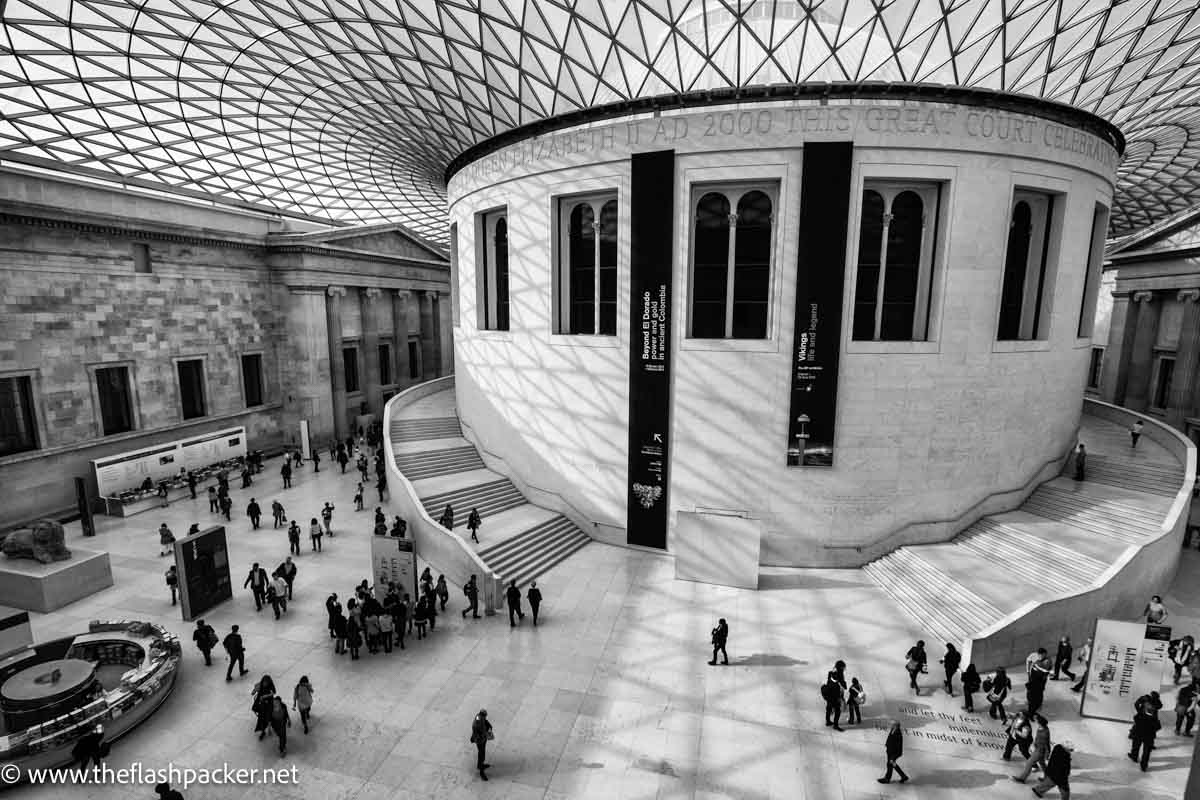
The British Museum is a revered London institution.
Housed within a majestic Greek Revival-style building in the heart of London’s Bloomsbury area, its impressive collection of treasures including the Rosetta Stone, Elgin Marbles (ahem!) and Egyptian mummies is world-beating. However, one of its best treasures is its stunning Great Court.
On a sunny day, light streams across the atrium, casting extraordinary shadows from its domed glass ceiling. For the best viewpoint of the Great Court, walk up to the gallery area above the main entrance.
As with most London museums, entrance to the permanent collection is free, but you need to pay to visit the museum’s special exhibitions. The British Museum also hosts a programme of excellent, often free, talks and its gift shop is a reliable place to pick up presents for those back home.
Closest Tube stations to the British Museum: Tottenham Court Road, Russell Square or Holborn
29. Tate Modern
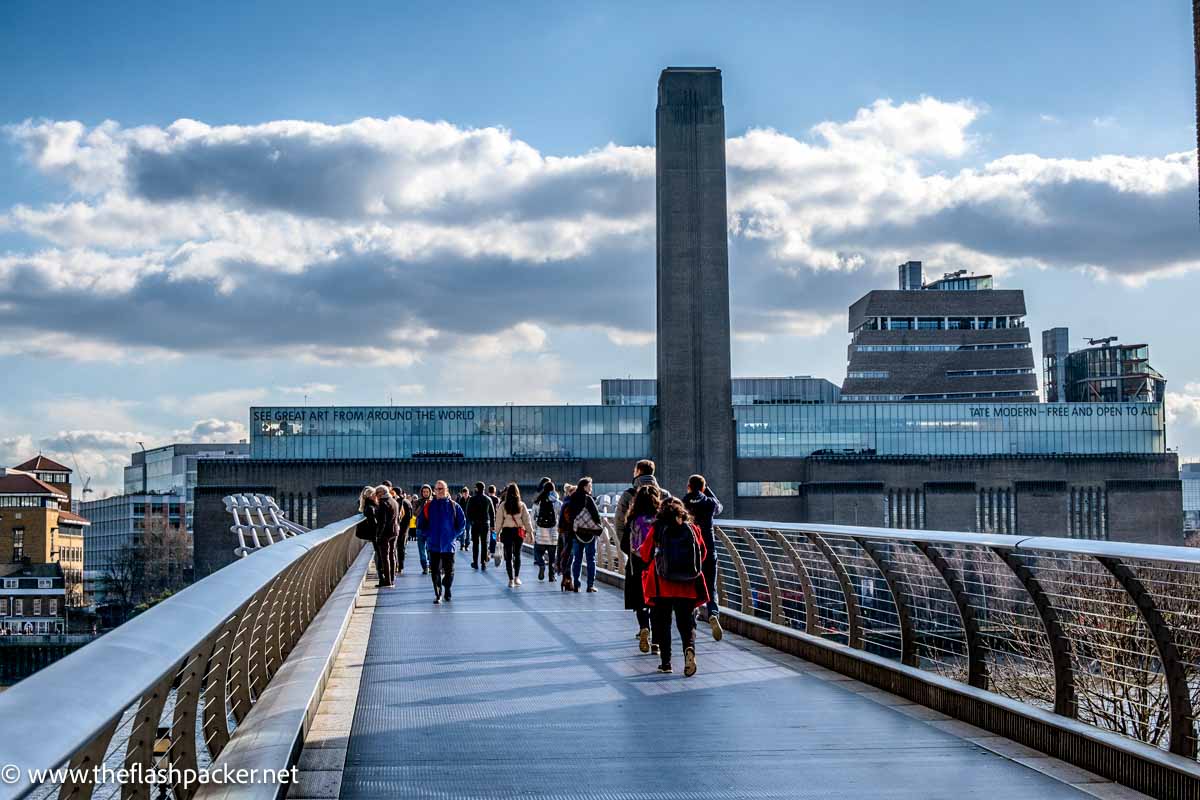
Who would have thought that a disused power station would become one of London’s most famous landmarks?
Tate Modern is London’s temple to modern and contemporary art. Displaying artworks from across the globe, it is housed in Sir Giles Gilbert Scott’s imposing former Bankside Power Station.
The building itself gives the artistic achievements it houses a good run for their money. The central 99m-high chimney has been left in situ, a two-storey glass box added to the roof and the cavernous Turbine Hall transformed into a dramatic exhibition space.
The newer five-storey Blavatnik Building – once the Switch House housing the electricity generators – features an outdoor 10th-floor viewing terrace, offering sublime views of the River Thames and St Paul’s Cathedral.
Tate Modern’s free permanent collection, featuring artists that include Pablo Picasso and Henri Matisse, never fails to pull in the crowds, but the gallery also hosts excellent blockbuster temporary exhibitions (admission fee applies).
Choosing between Tate Modern and Tate Britain, its sister museum, can be tricky, so why not visit both? When you’ve finished taking a look at Tate Modern, hop on RB2 riverboat service to visit Tate Britain at Bankside.
Closest Tube stations to Tate Modern: Southwark, Borough, London Bridge or Waterloo
30. Natural History Museum
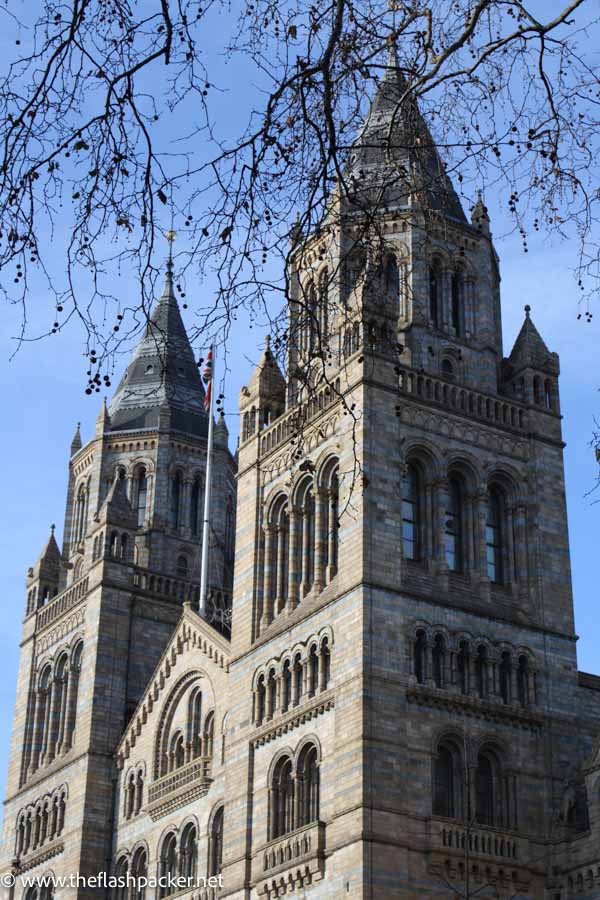
Walk through 4.5 billion years of natural history at the Natural History Museum, a stone’s throw from the southern edge of Hyde Park. Even if you are not that bothered about natural history, swing by here for the museum’s vast, cathedral-like building which is a masterpiece in itself.
This London landmark, richly decorated with sculptures of plants and animals, opened in 1881.
Its collection is vast, numbering 80 million items within five main collections: botany, entomology, mineralogy, palaeontology and zoology. But it is the world-famous dinosaur collection, which includes part of the first Tyrannosaurus rex skeleton ever discovered, that pulls the crowds.
As with most museums in London, entry to the Natural History Museum’s permanent collection is free but you will have to pay for the temporary exhibitions (I highly recommended the annual Wildlife Photographer of the Year exhibition).
Closest Tube stations to the Natural History Museum: South Kensington or Gloucester Road
Best Squares & Parks in London
31. Hyde Park
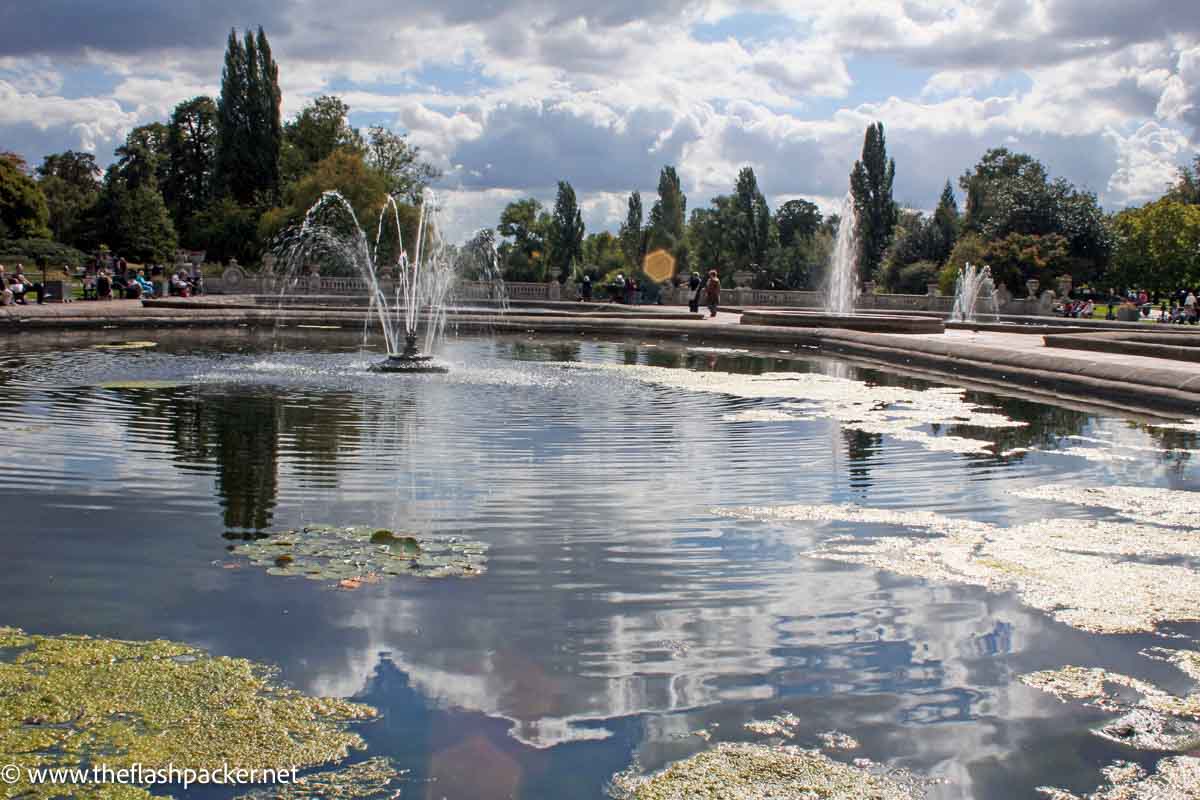
Spread over 350 acres, Hyde Park is one of London’s biggest and best green spaces, and certainly the most famous.
One of London’s eight Royal Parks, this urban oasis has something for everyone.
People come to trail their fingers in the Diana, Princess of Wales Memorial Fountain, take a pedalo for a spin on The Serpentine, view cutting-edge contemporary art in the Serpentine Gallery or simply walk, cycle or rollerblade along its acres of paths.
One of my favourite things to do on a Sunday is to head to Speakers Corner, on the northeastern edge of Hyde Park, where budding orators and a few eccentrics exercise their right to free speech. Their views range from the profound to the downright wacky but are rarely dull.
Closest Tube stations to Hyde Park: Knightsbridge, Lancaster Gate, Hyde Park Corner or Marble Arch
32. Kew Gardens
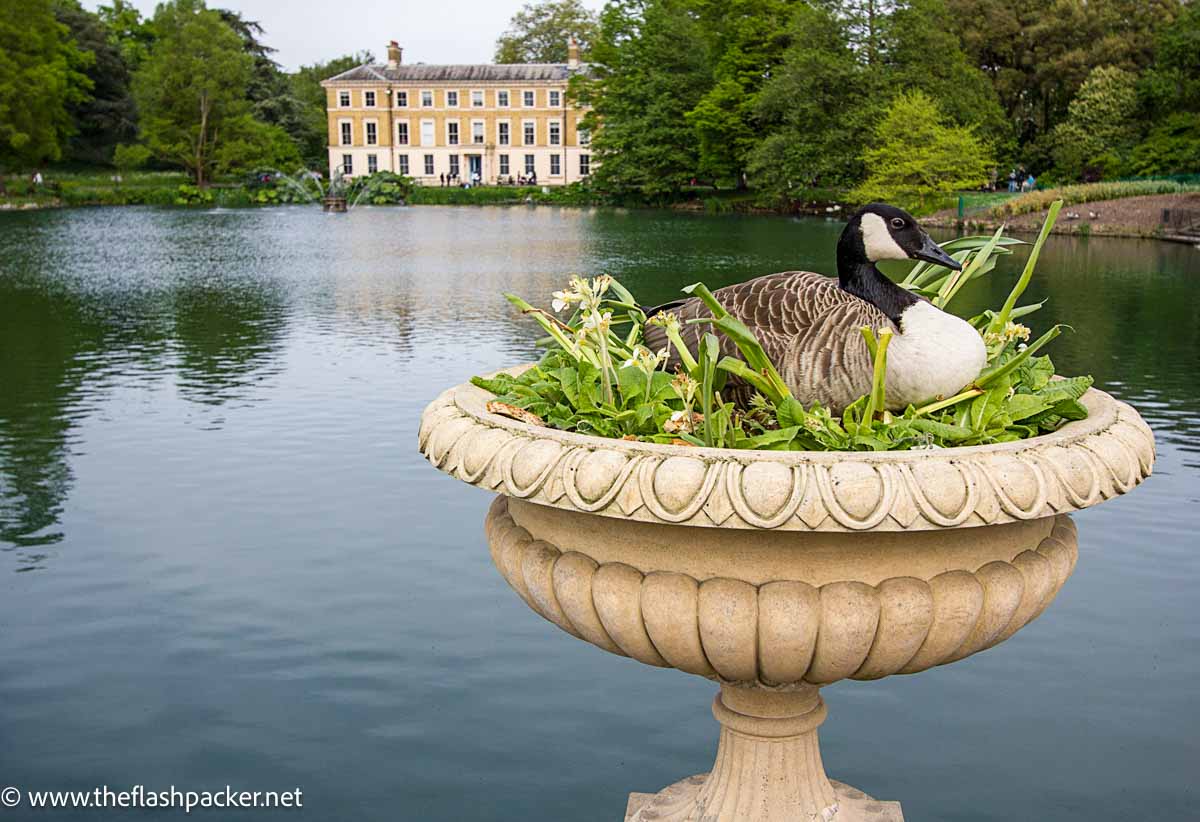
The Royal Botanic Gardens at Kew is the fourth and final UNESCO World Heritage site in London and home to the world’s largest and most diverse collection of plants. These former royal gardens were given over to the public in 1841 and now display over 50,000 plant species.
The recently restored Temperate House and the Palm House offer a warm winter refuge for plants and visitors alike and are jewels of Victorian engineering.
Kids adore the Treetop Walkway, suspended 18 metres above ground and offering a bird’s eye view of the forest.
Kew Gardens even has an art installation, The Hive, an immersive sight-&-sound experience triggered by bee activity.
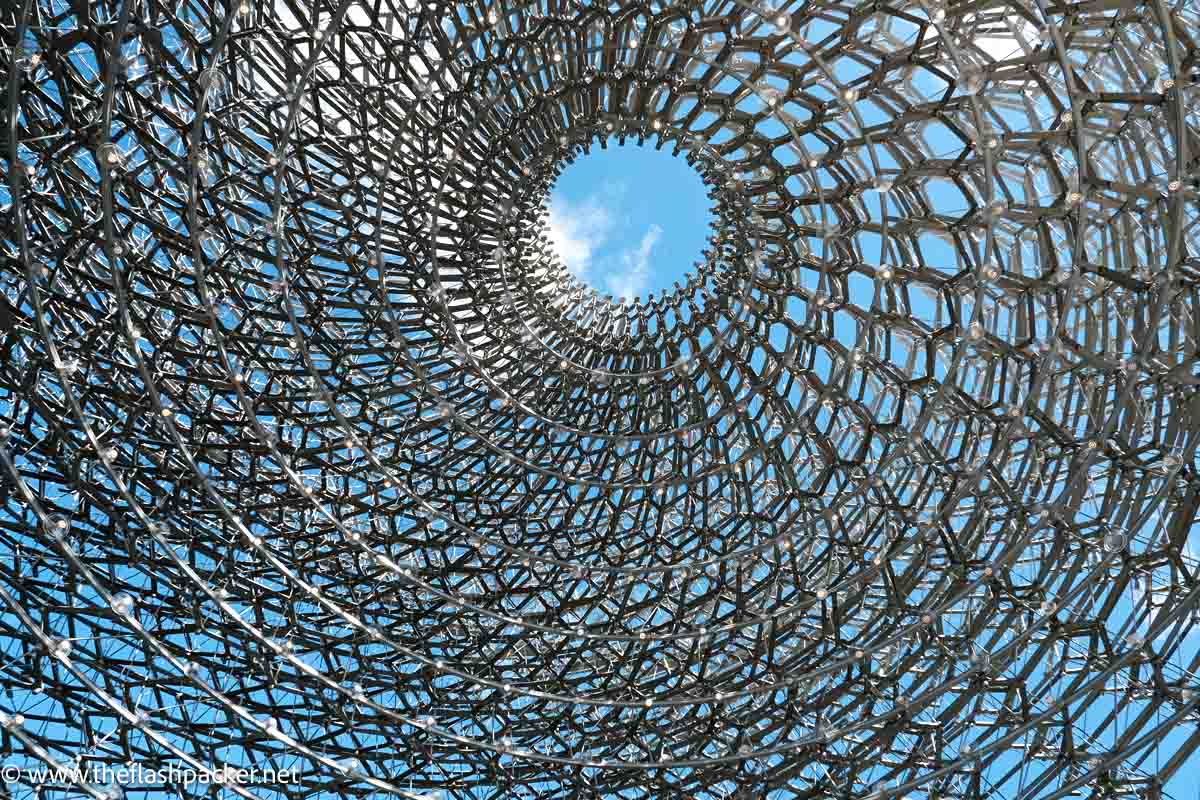
There’s something to see in Kew Gardens all year round but springtime is an explosion of colour, and the arboretum, with its vast collection of 14,000 trees, is spectacular in autumn.
How to get to Kew Gardens: Take a mainline train from Waterloo to Kew Bridge or London Overground / District Line to Kew Gardens
33. Dinosaurs in Crystal Palace Park
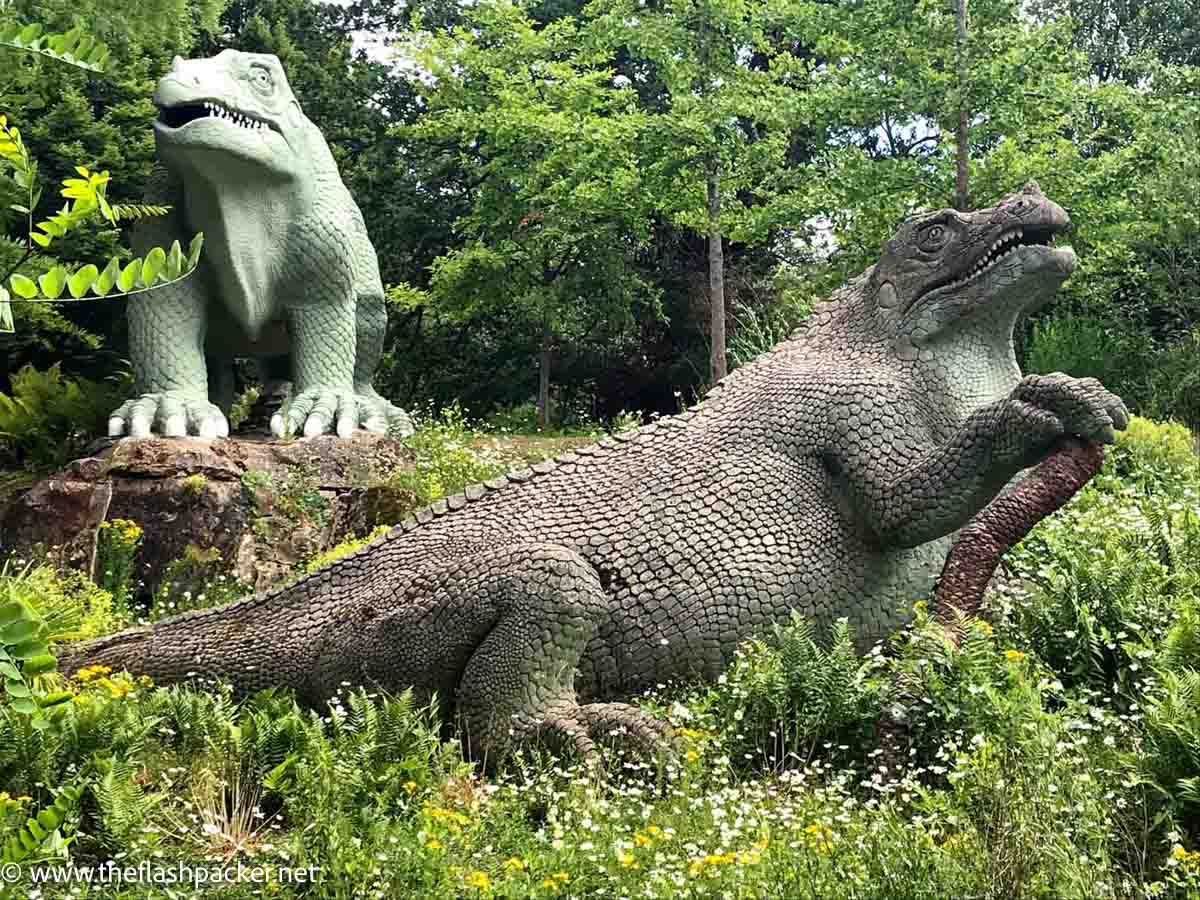
Head to Crystal Palace Park in south London to meet 30 dinosaurs arranged around its lakes like improbable domestic animals.
These bizarre pieces of Victoriana, sculpted by Benjamin Waterhouse Hawkins, were intended to educate the masses on the emerging theory of evolution. Instead, being in direct opposition to the prevailing biblical ‘truth’, they outraged them.
Today, the Crystal Palace dinosaurs are a much-loved London landmark. I love the fact that they are ever so slightly wrong.
These sculptures reflected scientists’ understanding of dinosaurs at the time, which was limited. As a result, many of these dinosaurs are a peculiar mish-mash of different animals, looking very different from what we now believe to be the case.
How to get to Crystal Palace Park: Take a mainline train from Victoria to Crystal Palace or Penge West
Other Famous London Landmarks
34. HMS Belfast
HMS Belfast is moored on the River Thames, close to Tower Bridge.
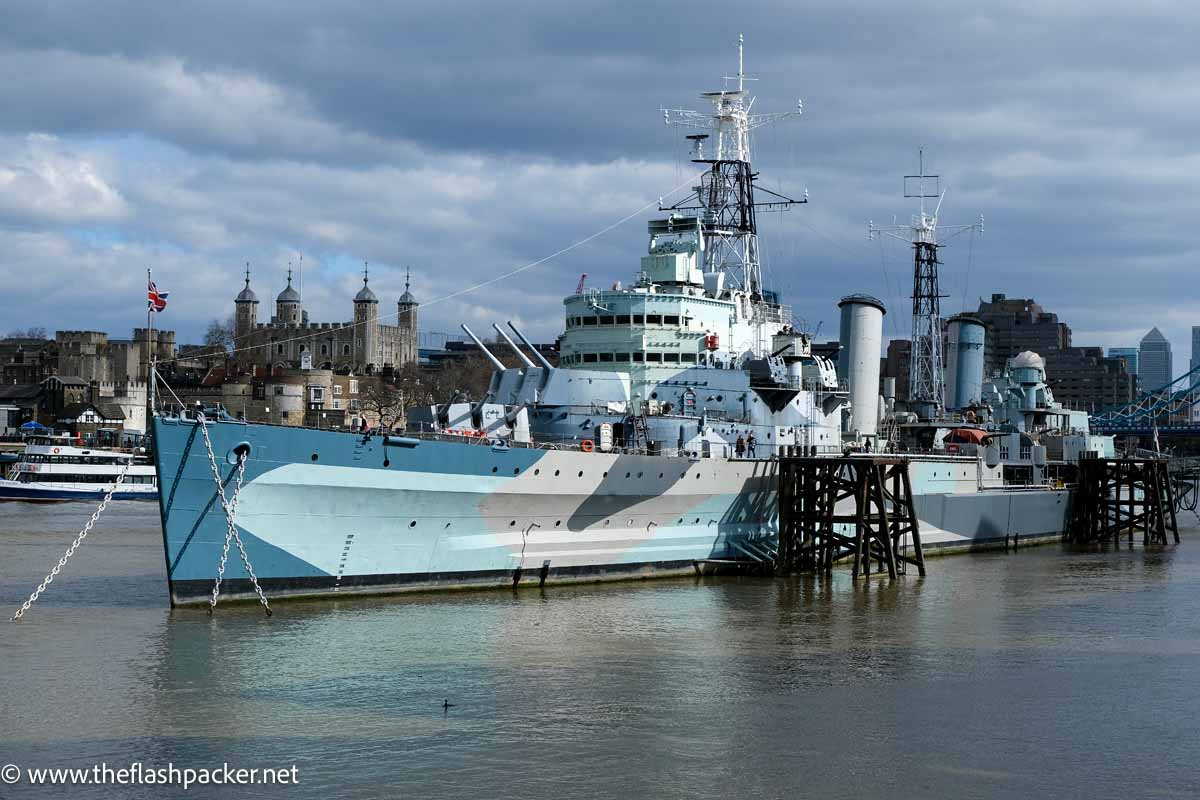
This hulking Royal Navy warship was in service for 32 years from 1938, when it saw action during World War II and the Korean War. Between 1950 and 1960, it was used for humanitarian purposes and was retired in 1965.
It started life as a floating museum in 1971 and is part of the excellent Imperial War Museum (also well worth a visit). You can visit all of its nine decks with an included audio guide
Closest Tube stations to HMS Belfast: London Bridge and Tower Hill
35. Millennium Bridge
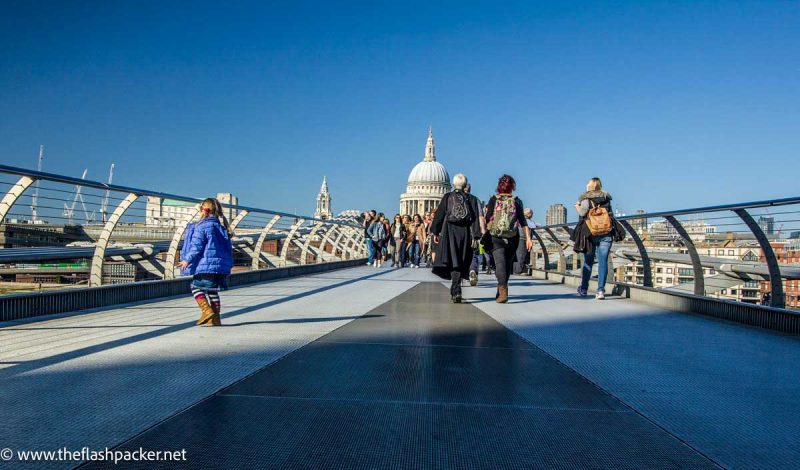
Opened to great fanfare in 2000, eager visitors swarmed over its shiny new deck, resulting in an alarming sway. Although there was no chance that the bridge would tumble down, engineers felt that the problem needed to be rectified.
It was closed for remedial work, reopening in June 2002. To this day, many Londoners refer to the Millennium Bridge as the Wobbly Bridge, although the wobble has long since gone.
What makes the Millennium Bridge so extraordinary is its alignment. Stand at its southern end at Tate Modern to be treated to a wonderful view of the south façade of St. Paul’s Cathedral, framed by the bridge supports.
And for Potterheads out there, the bridge is destroyed by Death Eaters in Harry Potter and the Half-Blood Prince.
Closest Tube stations to the Millennium Bridge: St. Paul’s, Southwark, Borough or London Bridge
36. The Thames Barrier
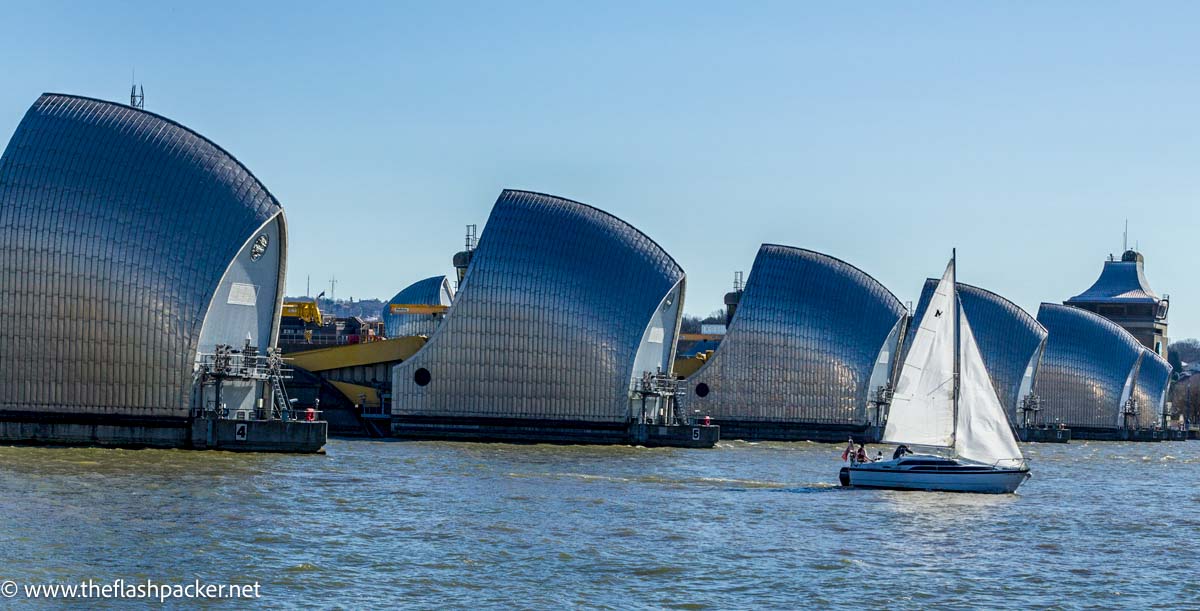
Engineering buffs should head downriver from Greenwich to the Thames Barrier.
The Thames is a tidal river and London has been vulnerable to flooding by exceptionally high tides and storm surges since Roman times. Operational since 1982, the Thames barrier is a retractable barrier system that is raised at high tide to prevent such flooding. Learn all about the barrier at the Thames Barrier Information Centre (I visited some years ago and found it fascinating).
If you have time to spare, visit the Thames Barrier Park, a 17-acre park that features a sunken garden, fountains, children’s playground and picnic areas. It’s also a prime spot from which to view the barrier.
How to get to the Thames Barrier: Your best bet for reaching the Thames Barrier is the Dockland Light Railway (DLR). The closest stations to the Thames Barrier are Pontoon Dock DLR, West Silvertown DLR and London City Airport (11-minute walk).
37. South Bank Book Market
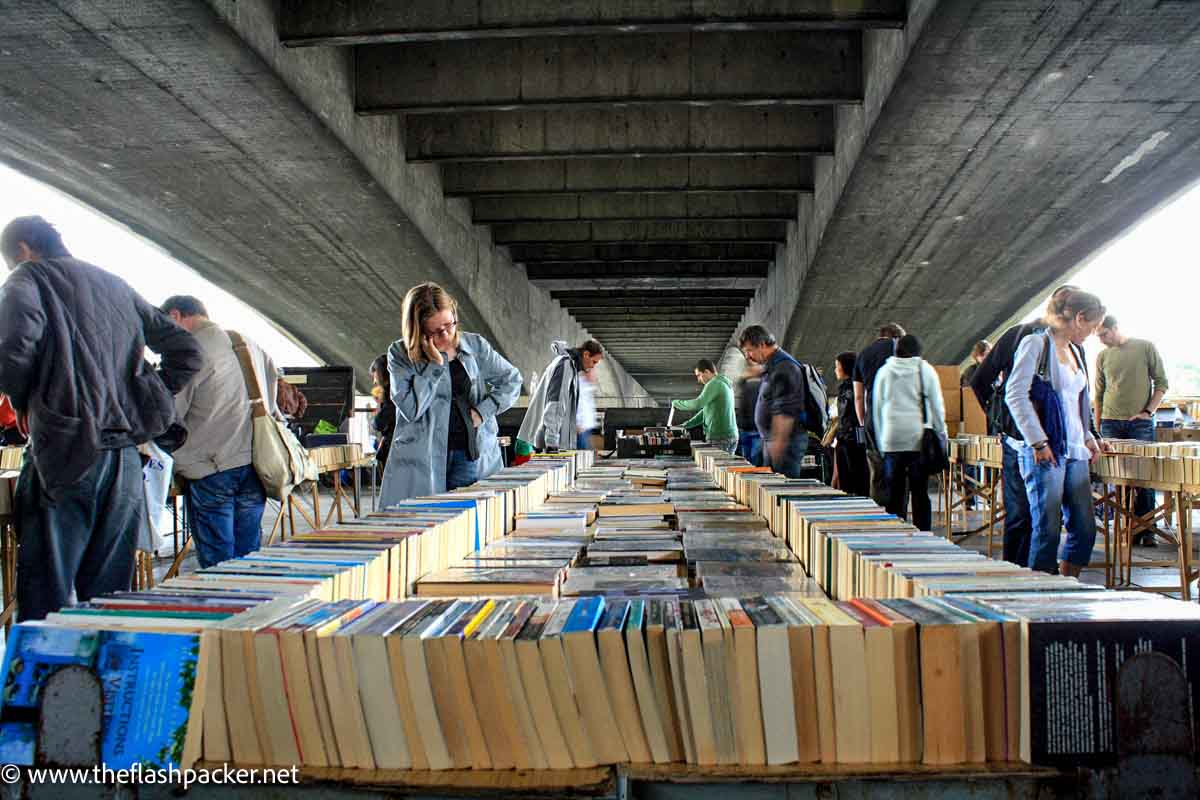
Beloved of Londoners and visitors alike, this second-hand book market alongside the Thames is a firmly established fixture on London’s landscape.
Tucked under Waterloo Bridge, outside the BFI Southbank, the South Bank Book Market has been around for donkey’s years. Open daily from 10 am until 7 pm, come rain or shine, sellers display their wares, from classics & contemporary titles to maps & prints, on long tables.
It’s a great spot to while away 10 or 15 minutes (or longer!). When you’ve selected your new read, why not relax with a drink on the BFI’s terrace bar?
Closest Tube station to South Bank book market: Waterloo
38. Portobello Road
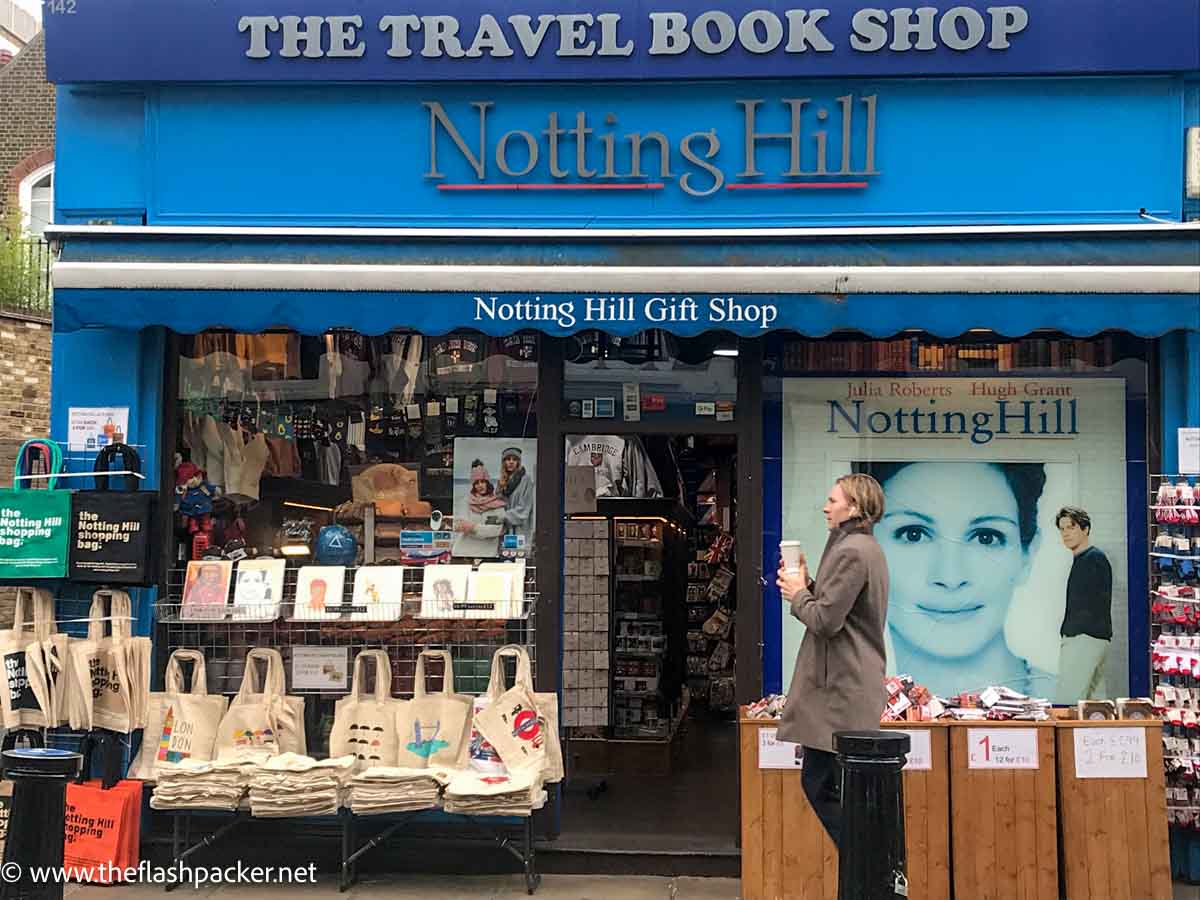
Running through the heart of Notting Hill, Portobello Road is a famous London landmark for two main reasons: its market and a certain movie.
Portobello Road market began in the mid-19th Century when local gipsies gathered here to trade horses and herbs. It operates from Monday to Saturday, with it reaching full swing on Saturdays.
Movie fans should make their way to number 142, the former Nicholls Arcade. It was here that the scenes depicting Thacker’s bookshop in the 1999 hit movie Notting Hill were shot.
Closest Tube stations to Portobello Road: Ladbrooke Grove or Notting Hill Gate
39. Piccadilly Circus
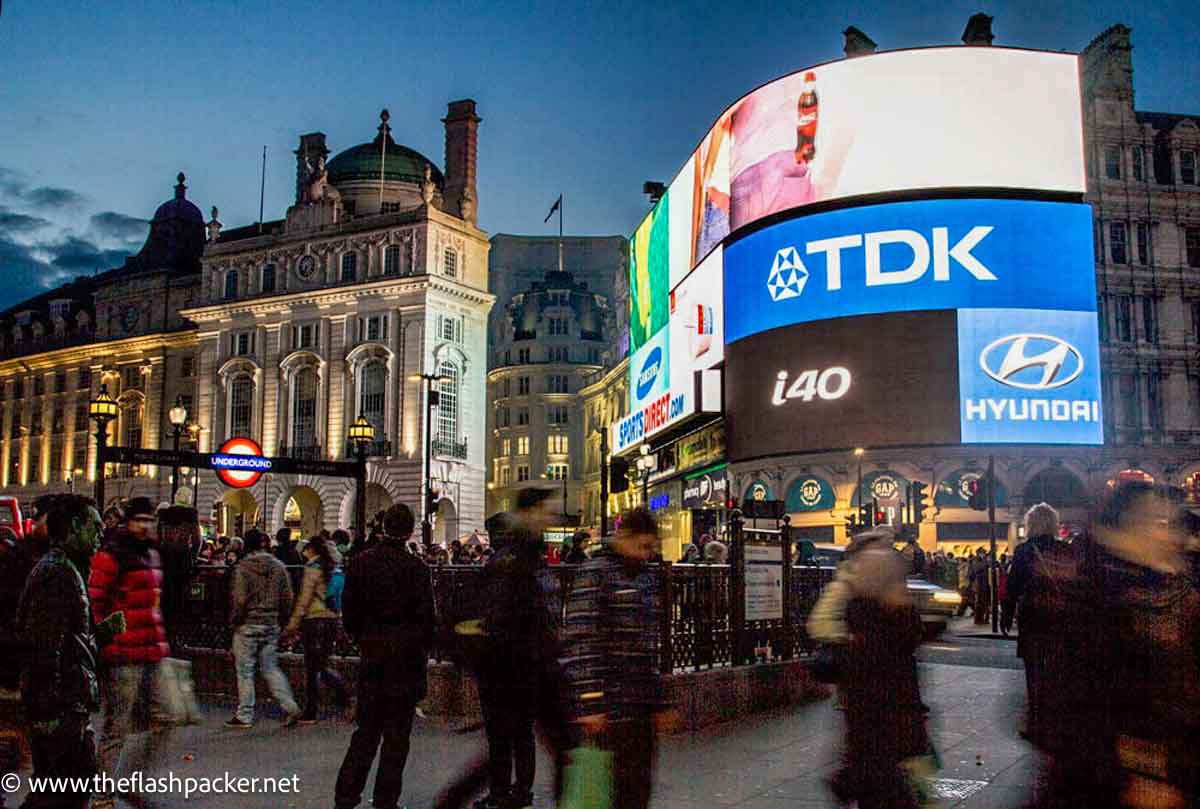
I’ll level with you. Piccadilly Circus is not my favourite place in London.
But while it is not a majestic bridge or architectural gem, it is nonetheless a famous London landmark.
This neon-lit road junction connecting the entertainment district of Leicester Square (another least favourite area of mine) with the theatres of Shaftesbury Avenue and the shops of Regent Street, is a popular meeting place. Think of it as London’s version of New York’s Times Square.
Piccadilly Circus is worth taking a look at if you are in the area and is a good place to take photographs, particularly at night.
Closest Tube stations to Piccadilly Circus: Piccadilly Circus
40. Street Art in London’s East End
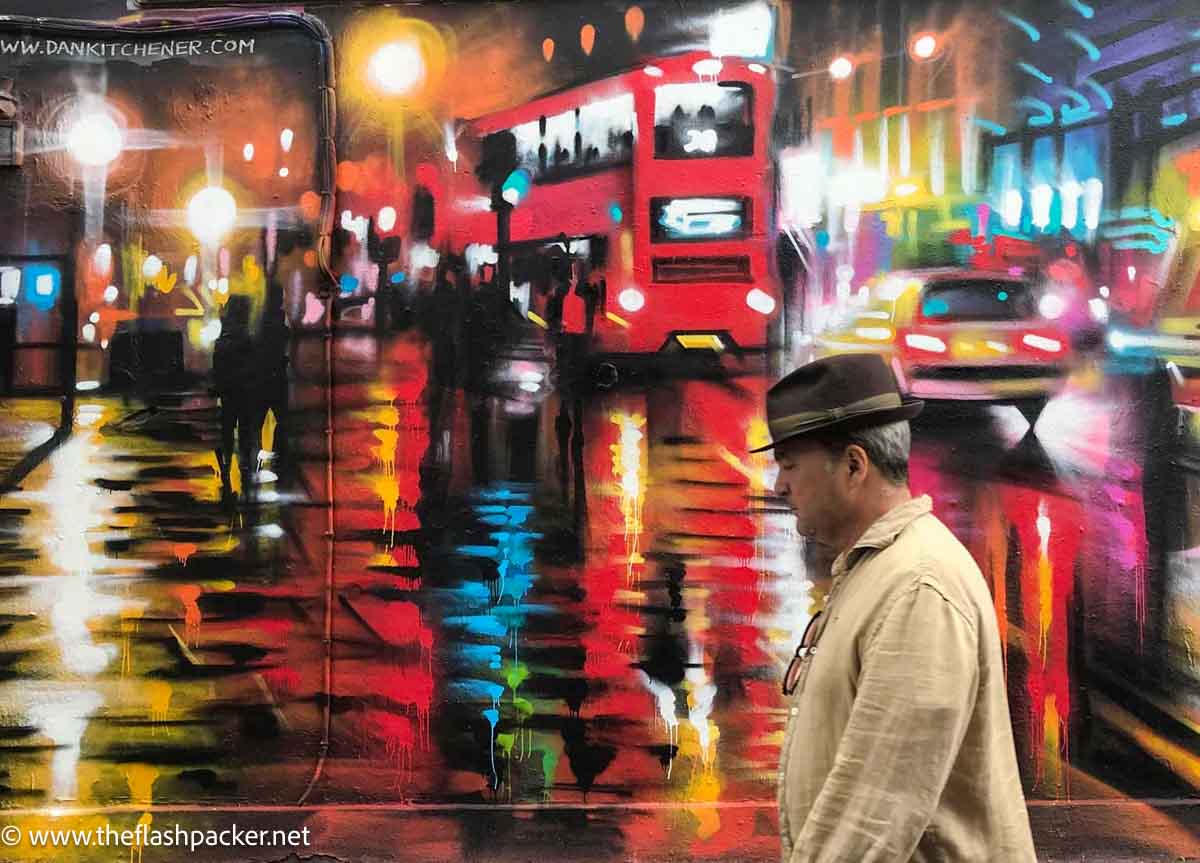
If you want to see a different side of London, venture east to Brick Lane, one of London’s oldest streets.
This once-neglected area is now booming with chic cafes, curry houses, vintage clothes shops, cutting-edge art galleries. And Brick Lane is also the epicentre of street art in London.
Building walls, hoardings, doors and shop shutters form the canvas for frequently changing artworks. These creations assume many forms, from massive murals to small paintings to stickers and posters.
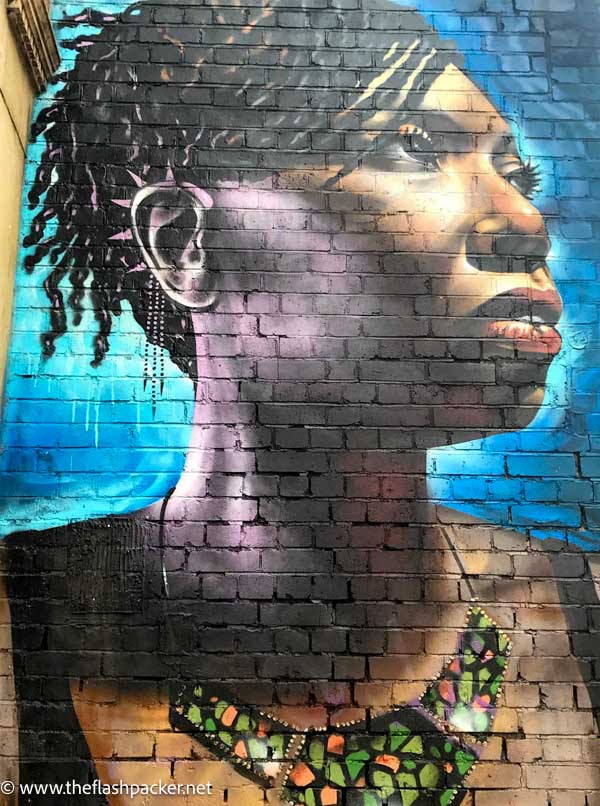
To discover the best street art in the area, take a free self-guided walking tour of Brick Lane.
If you are a fan of urban art, visit Walthamstow, also in East London, or spend a few hours exploring the street art in Camden Town.
Closest Tube station to Brick Lane: Aldgate East
Map of London’s Landmarks
Many of these famous places in London are located centrally. However, London is a sprawling city and a few are located at its edges.
I have mapped out these landmarks of London, colour-coded into five broad geographic areas:
- The South Bank and the City of London
- Canary Wharf & beyond
- Westminster, West End and Bloomsbury
- Kensington & Chelsea & beyond
- London suburbs
Simply click here, or on the image, for an interactive map.
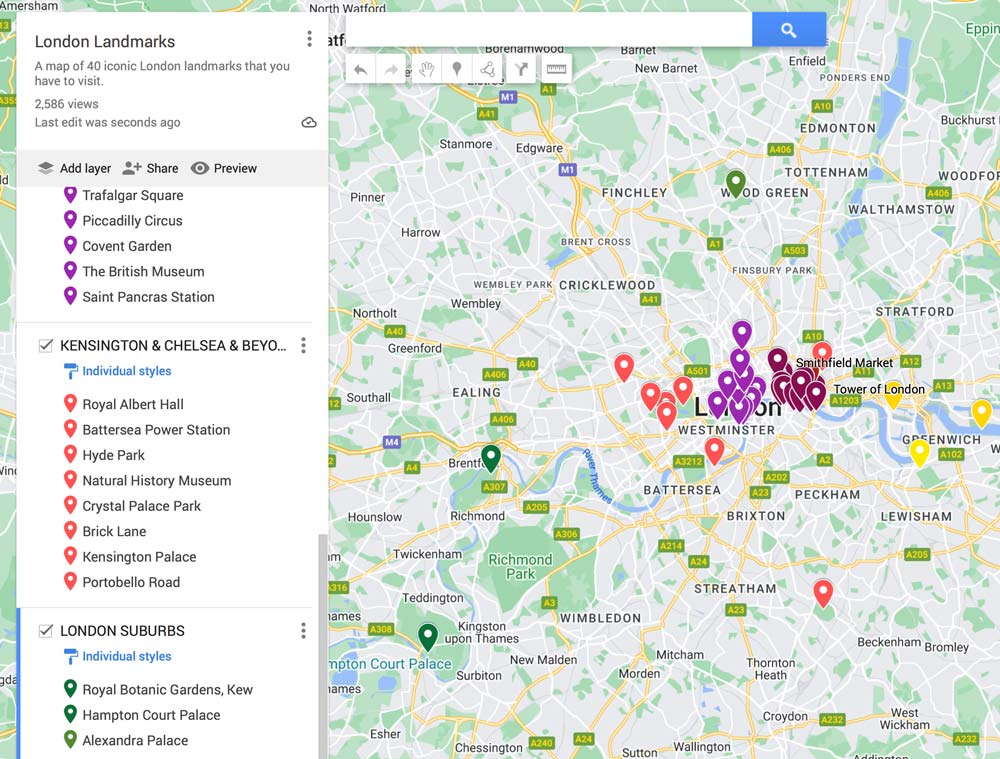
And That’s a Wrap!
I hope that this round-up of London’s must-see sights will help you make the best of your time in my hometown. If you have any questions, just pop them in the comments below.
Finally, did you know that many of these London attractions are included in the two excellent city passes?
The London Pass offers access to 90+ attractions and activities over a set number of days. Alternatively, a London Explorer Pass allows you to decide how many attractions you would like to visit in a 60-day period.
Buy your London Pass here, and your London Explorer Pass here. To find out more, check out my London Pass review or this lowdown on the London Explorer Pass.
I’ve even used them as a local!
Happy travels!
PS. If you’ve enjoyed this London guide, pin it for later!
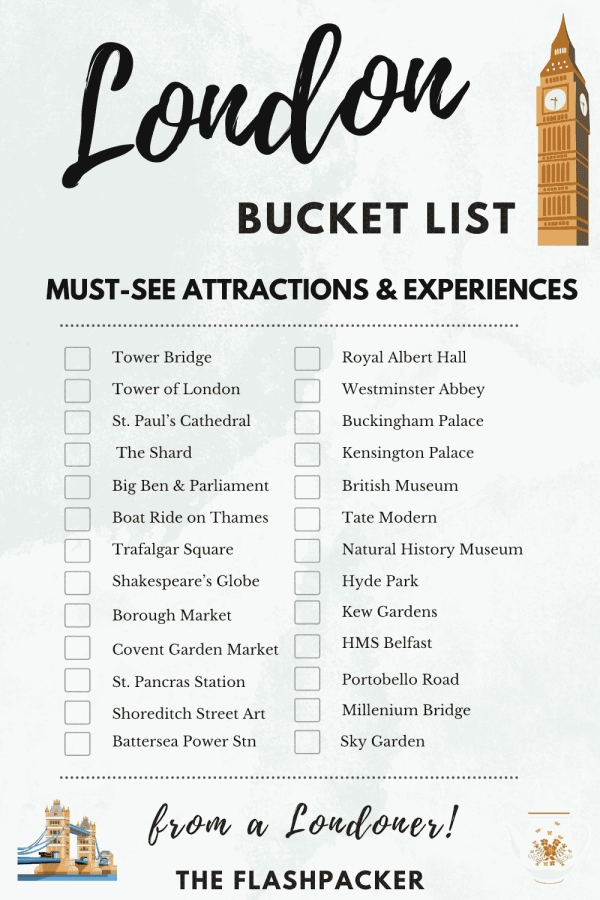
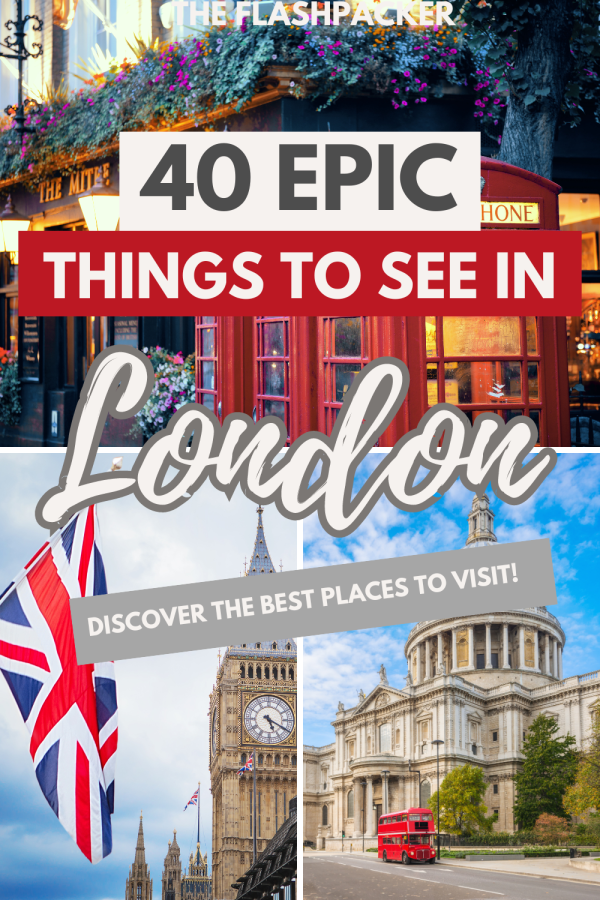

About Bridget
Bridget Coleman is a Londoner and has been a passionate traveller for more than 30 years. She has visited 70+ countries, most as a solo traveller.
Articles on this site reflect her first-hand experiences.
To get in touch, email her at hello@theflashpacker.net or follow her on social media.

Great post. Nice to see Thames Barrier, Crystal Palace, and tube stations on here.
Thanks! It was a labour of love :)